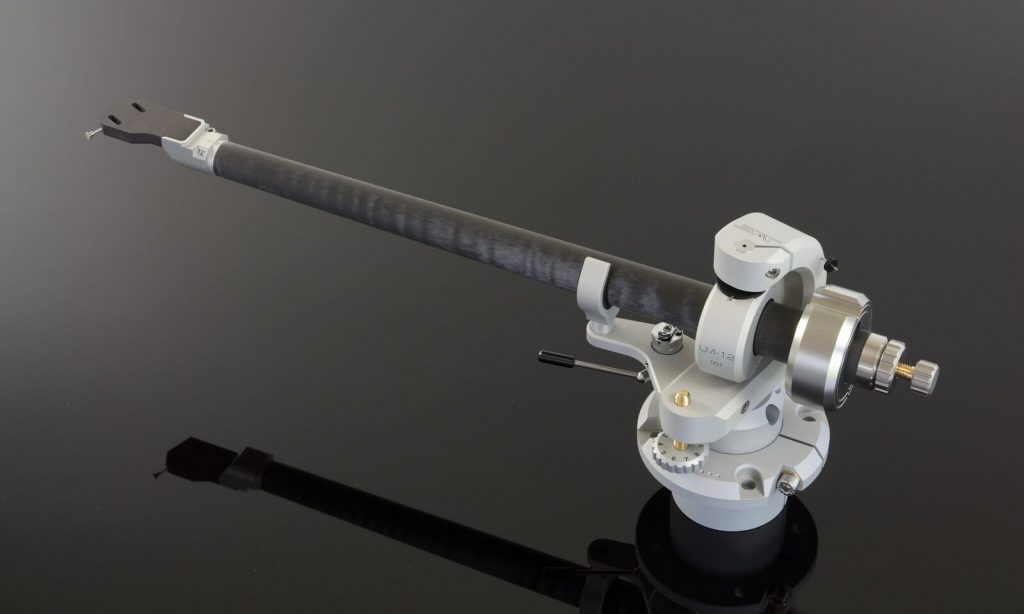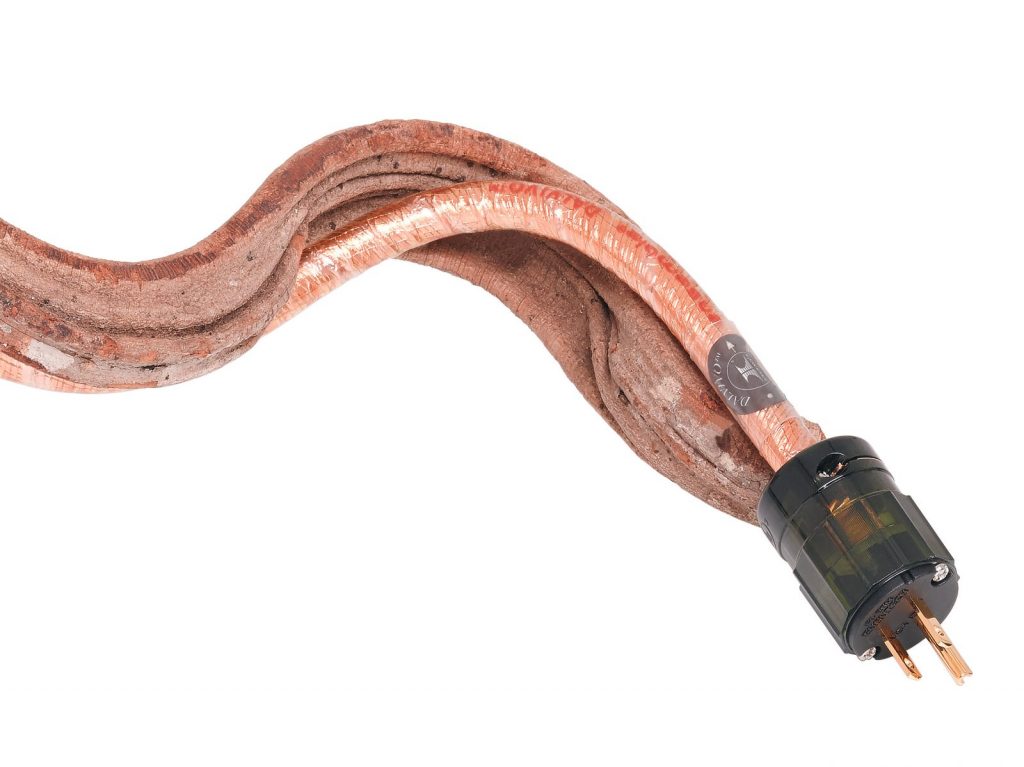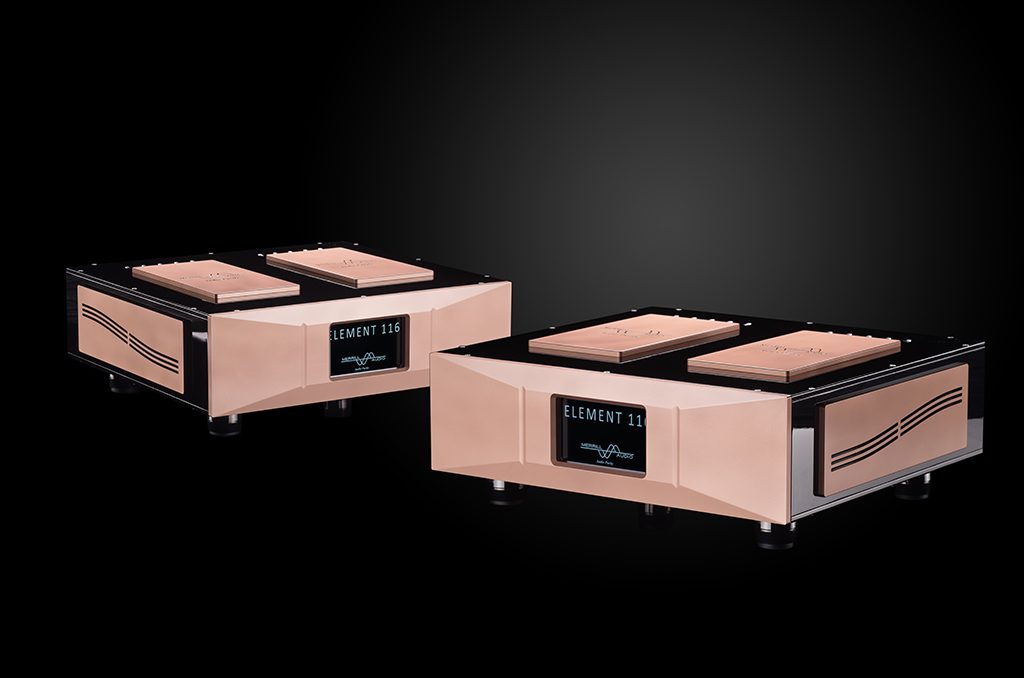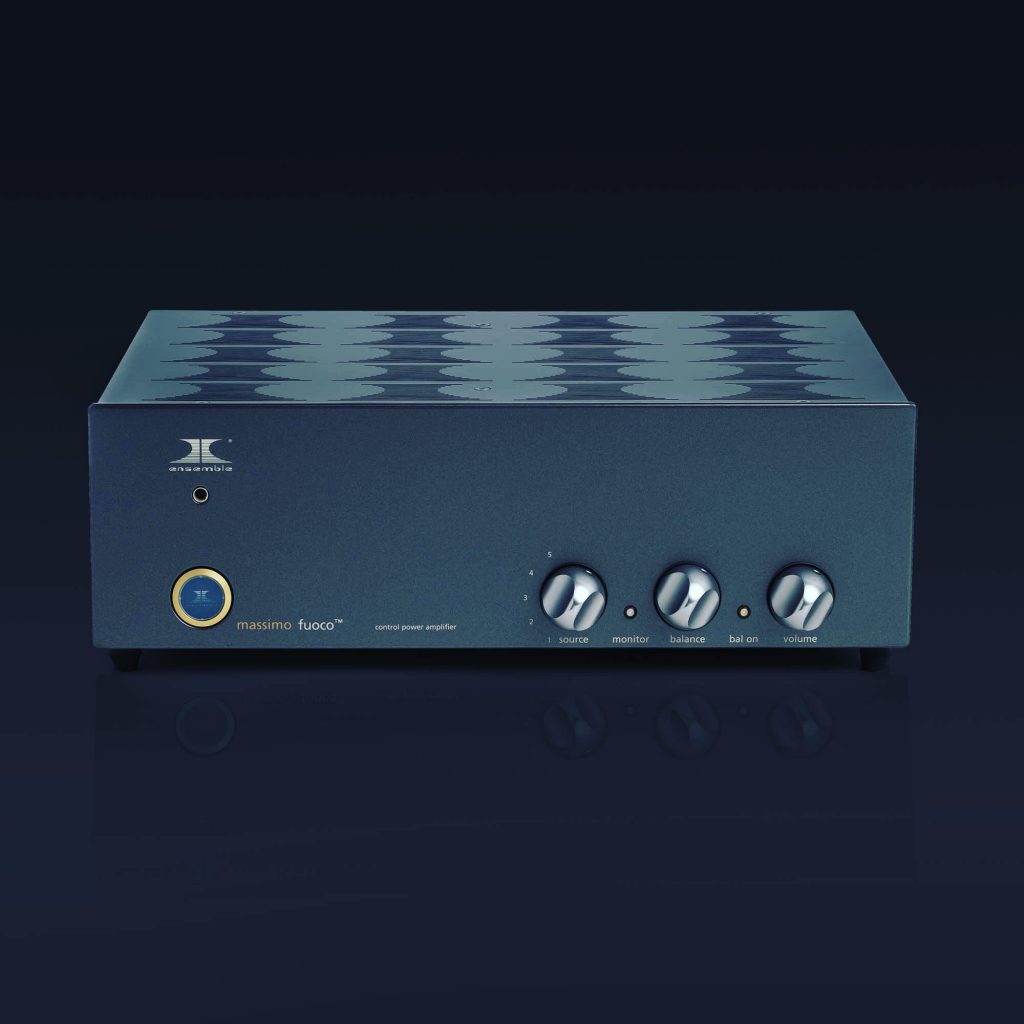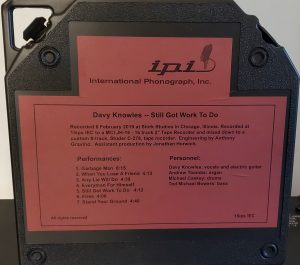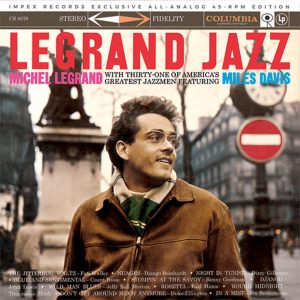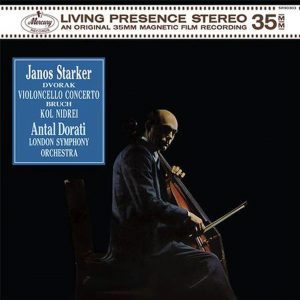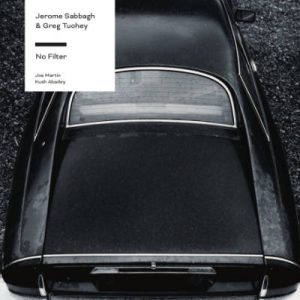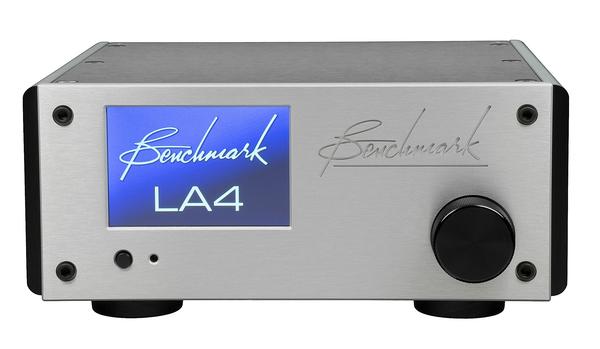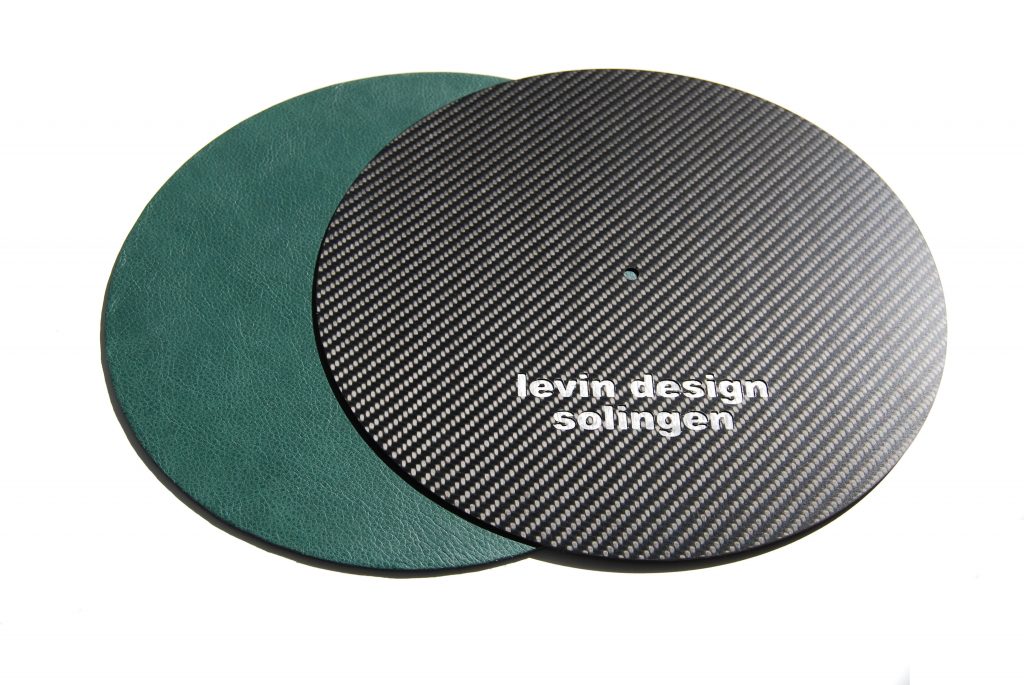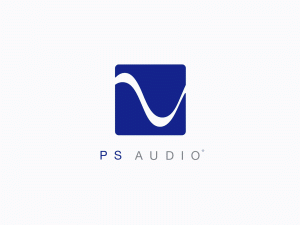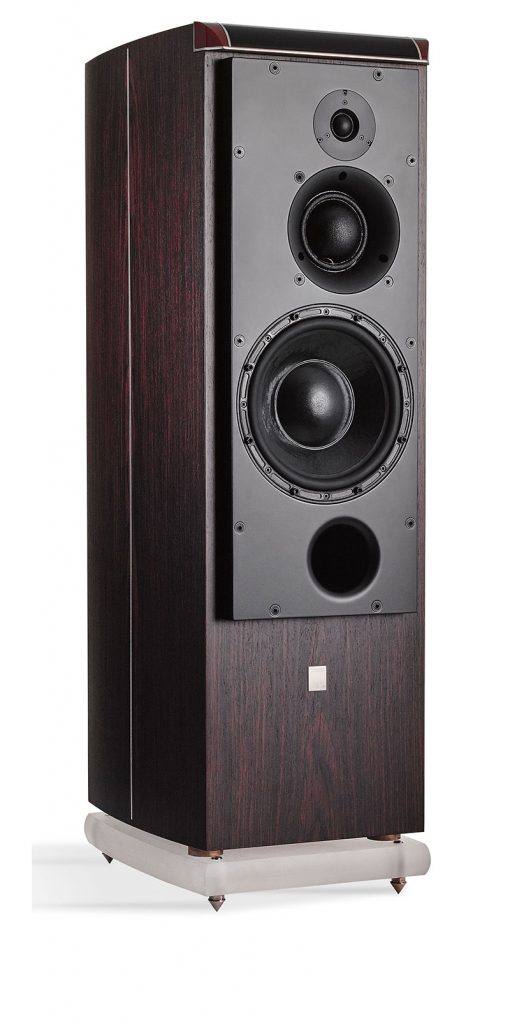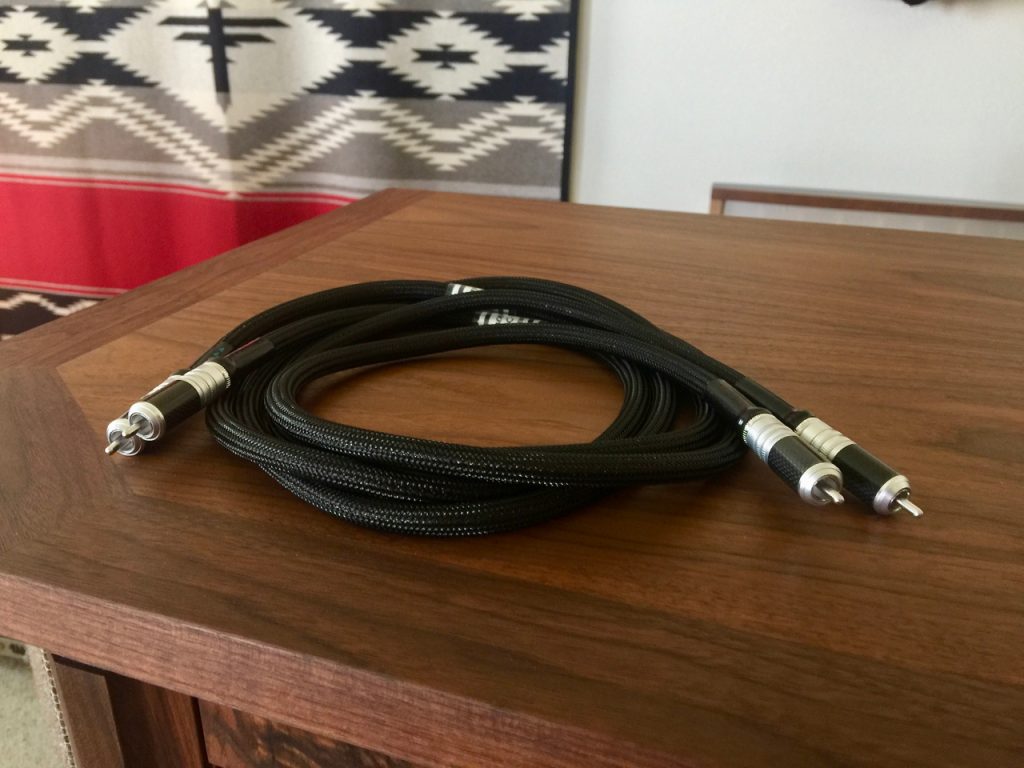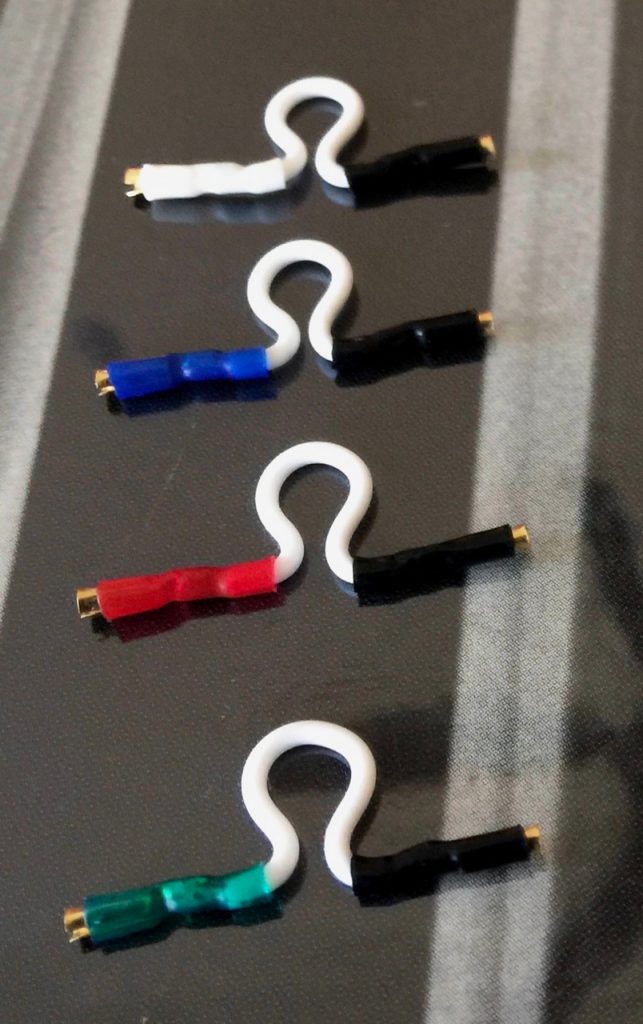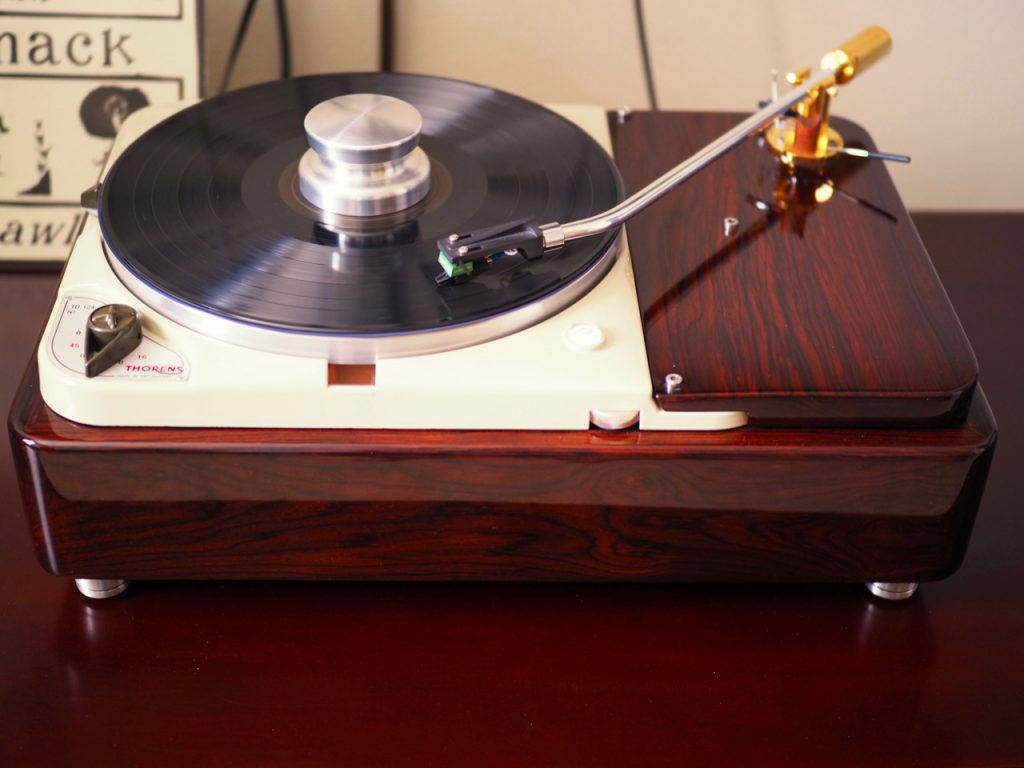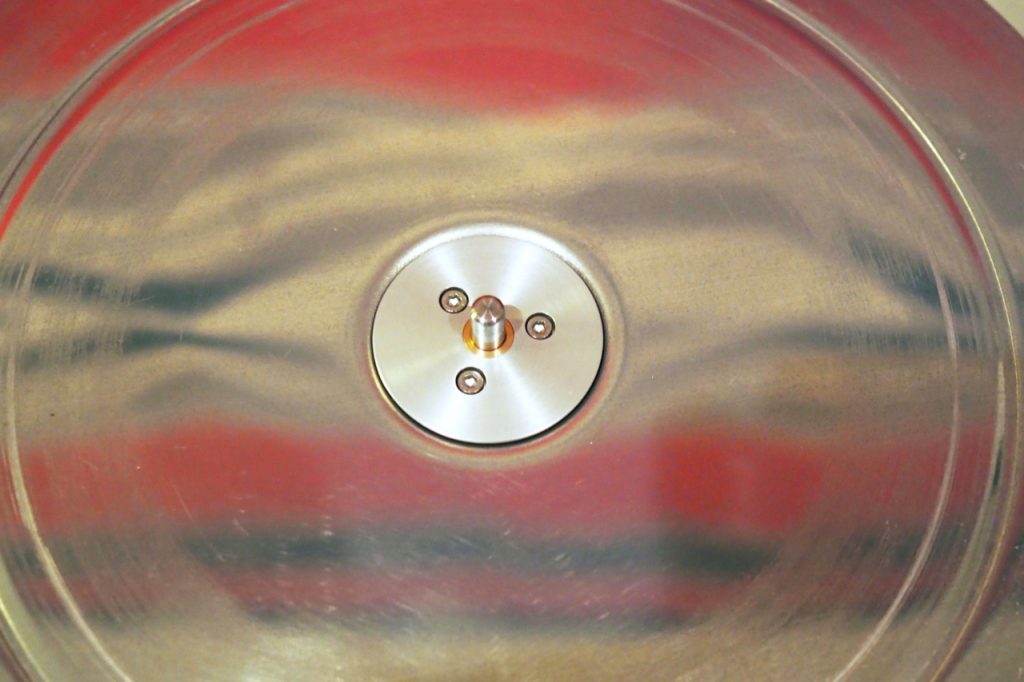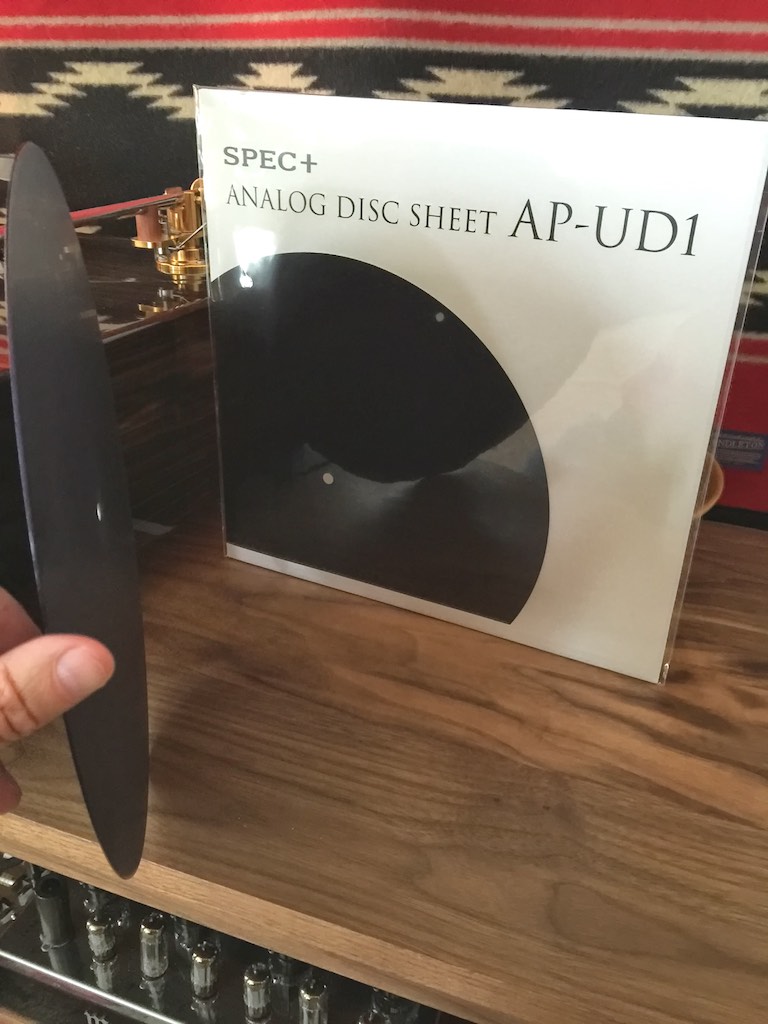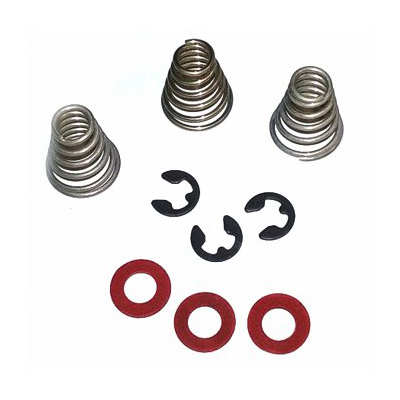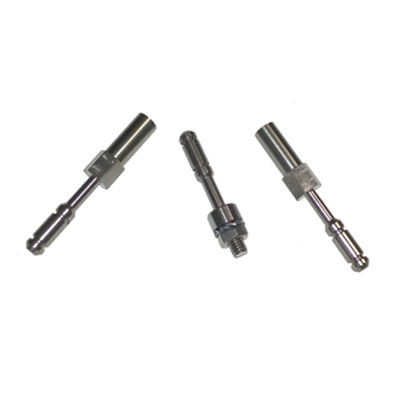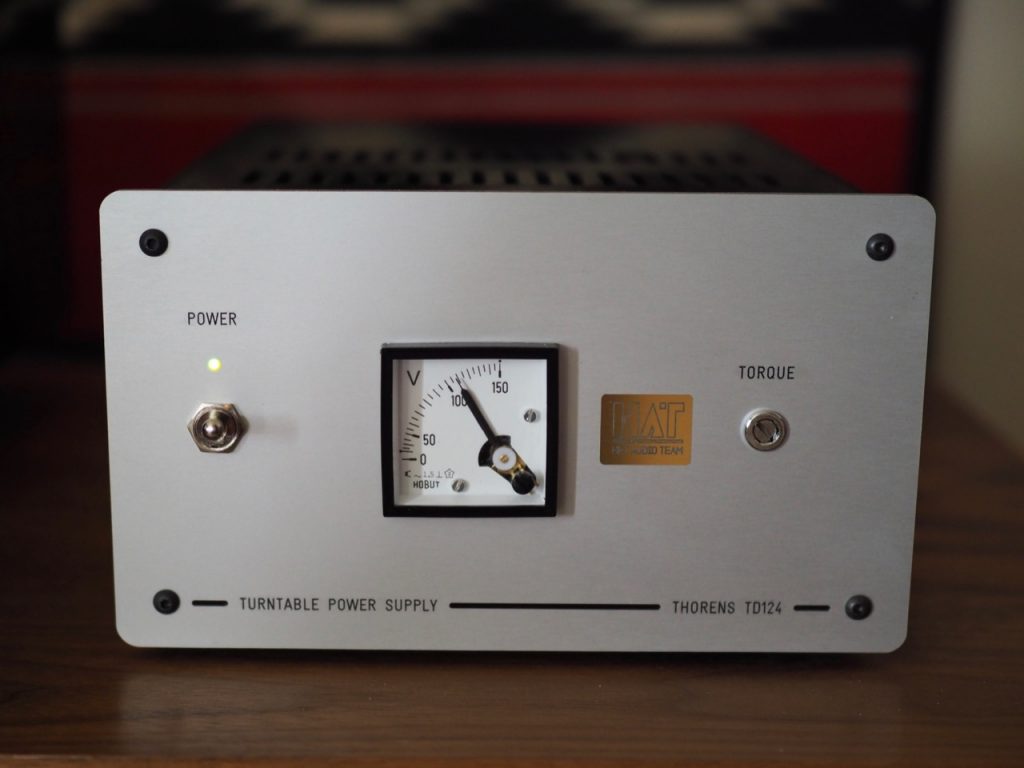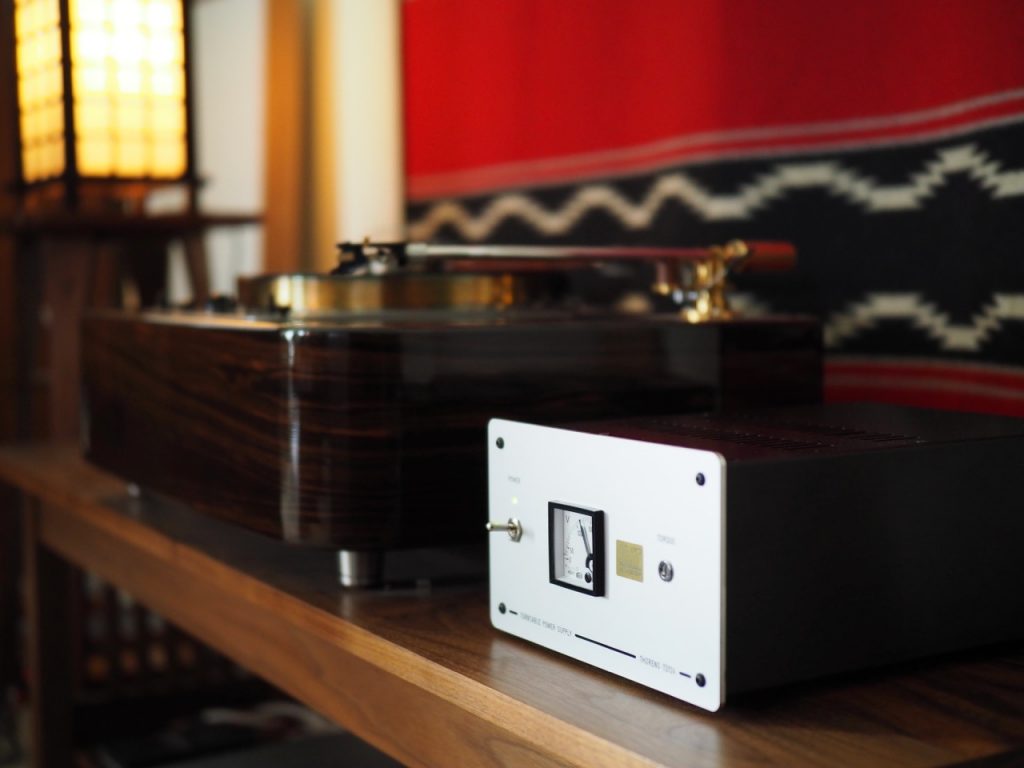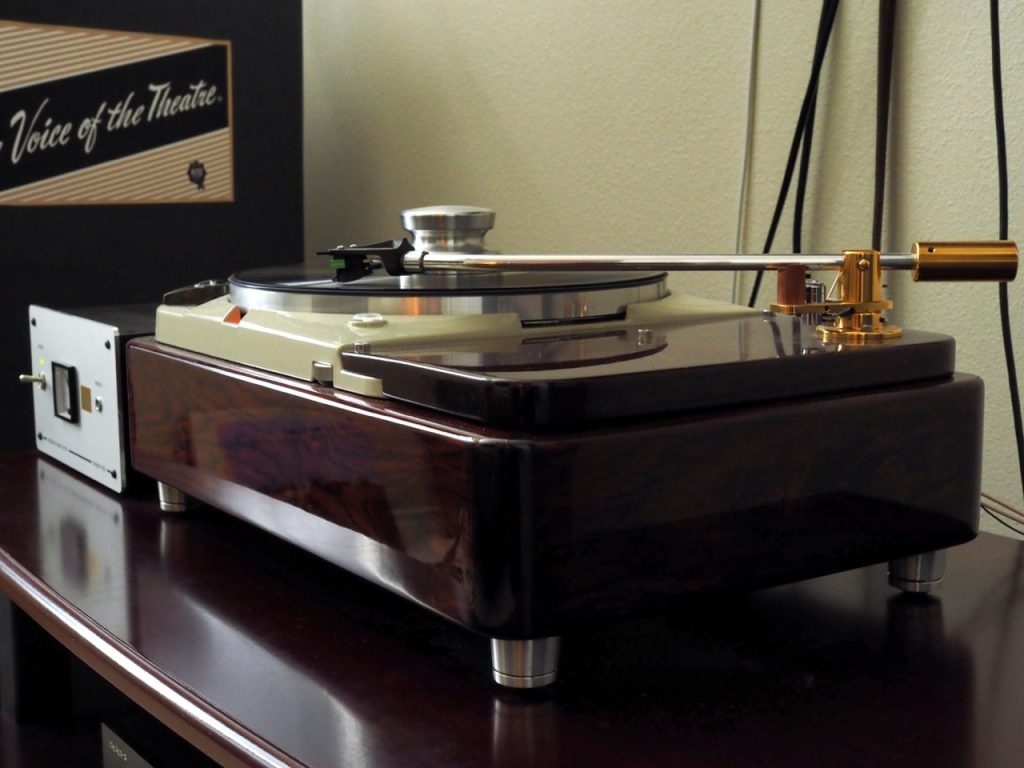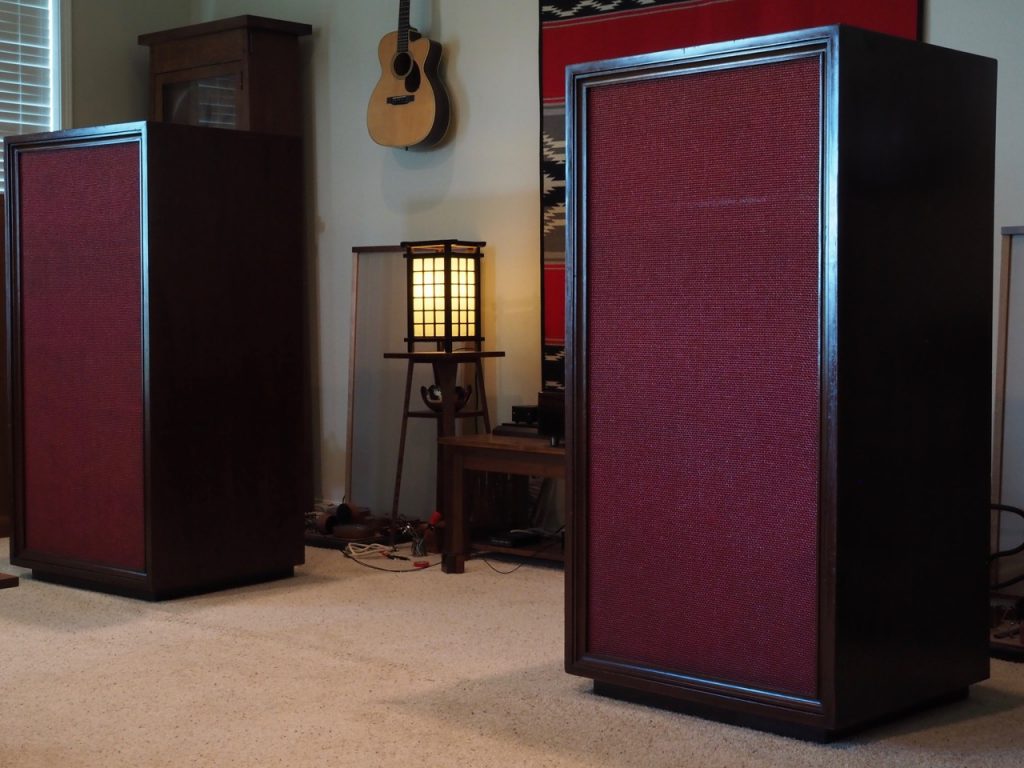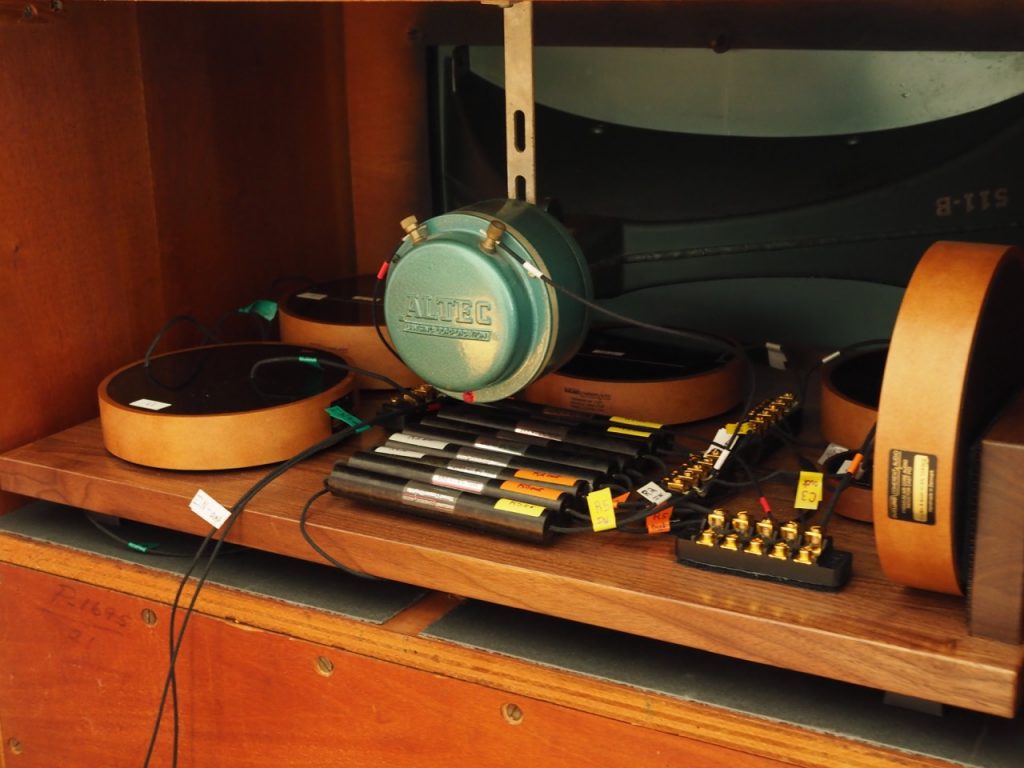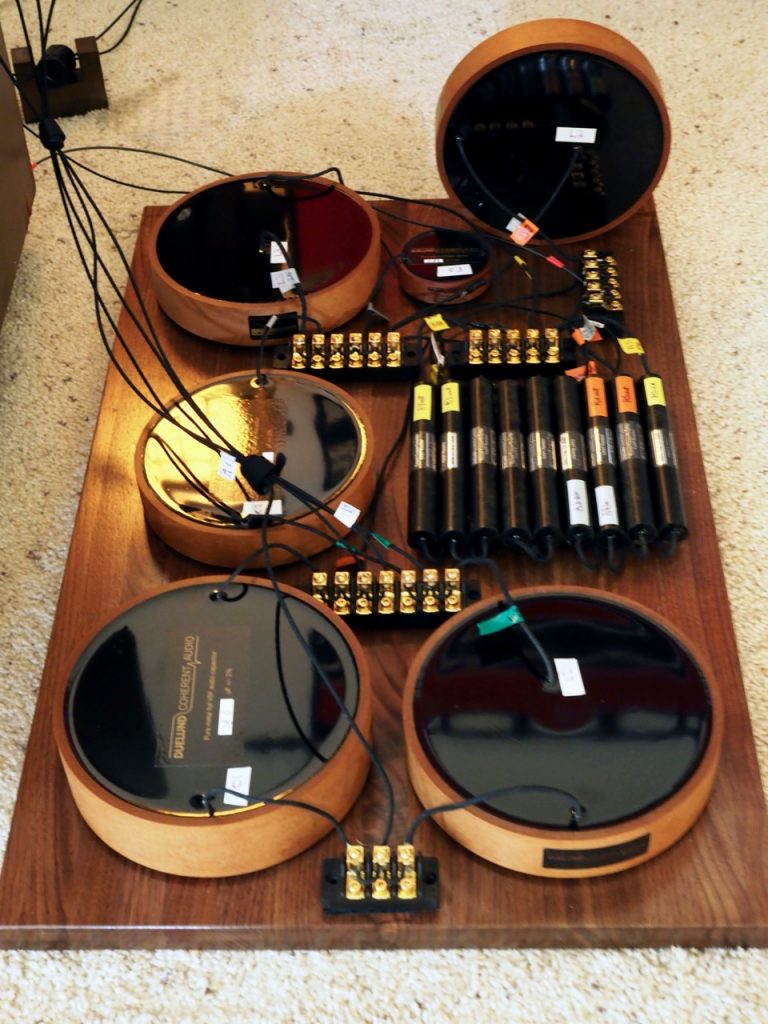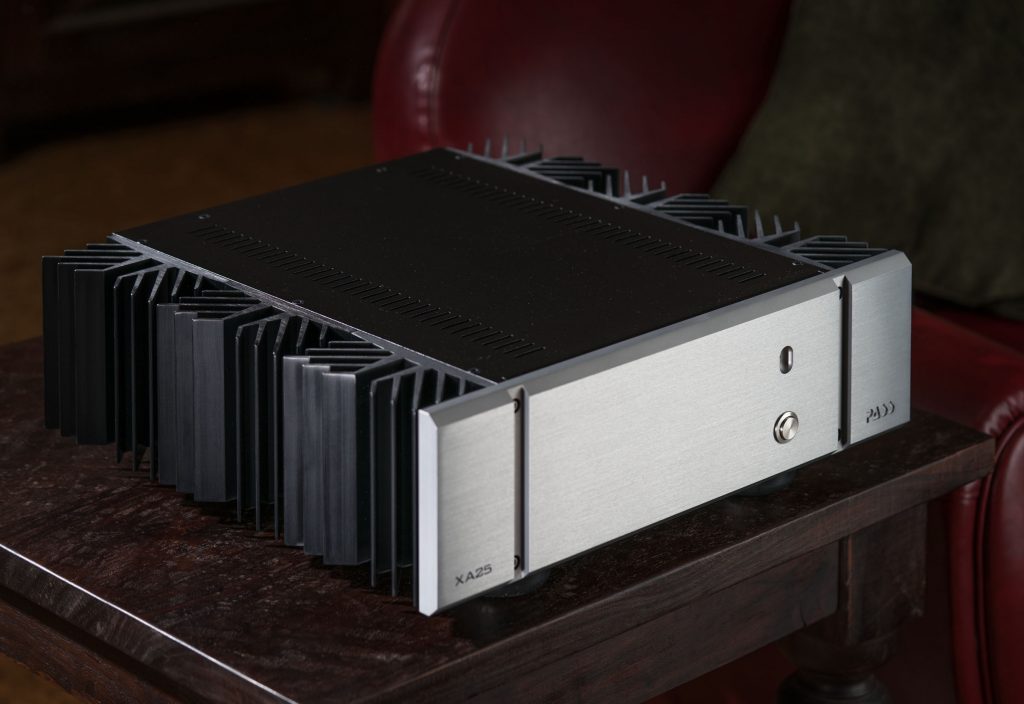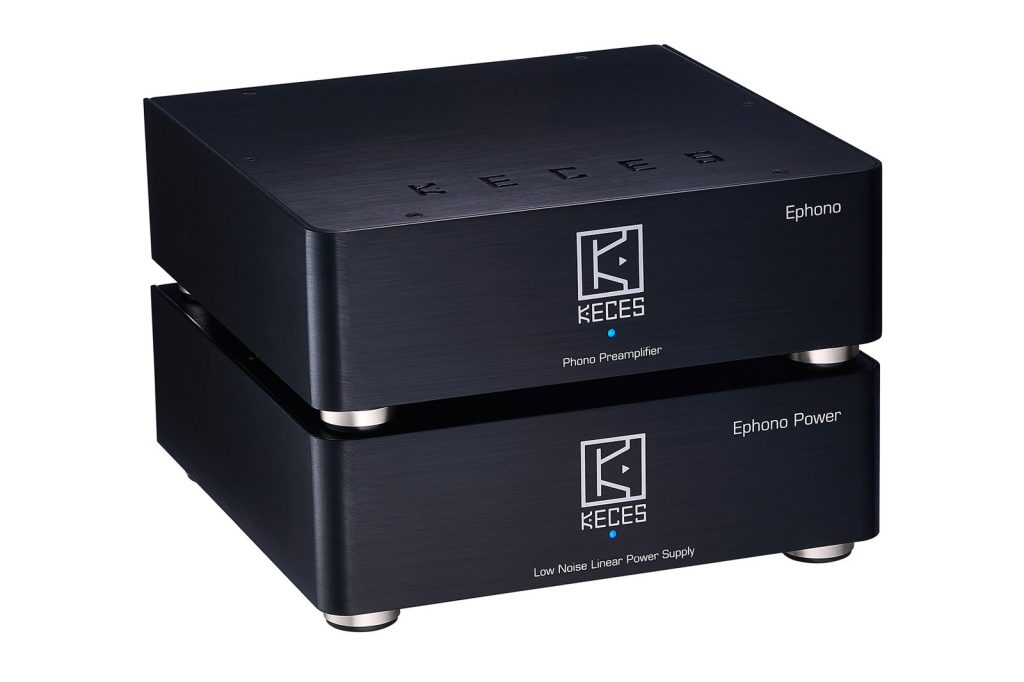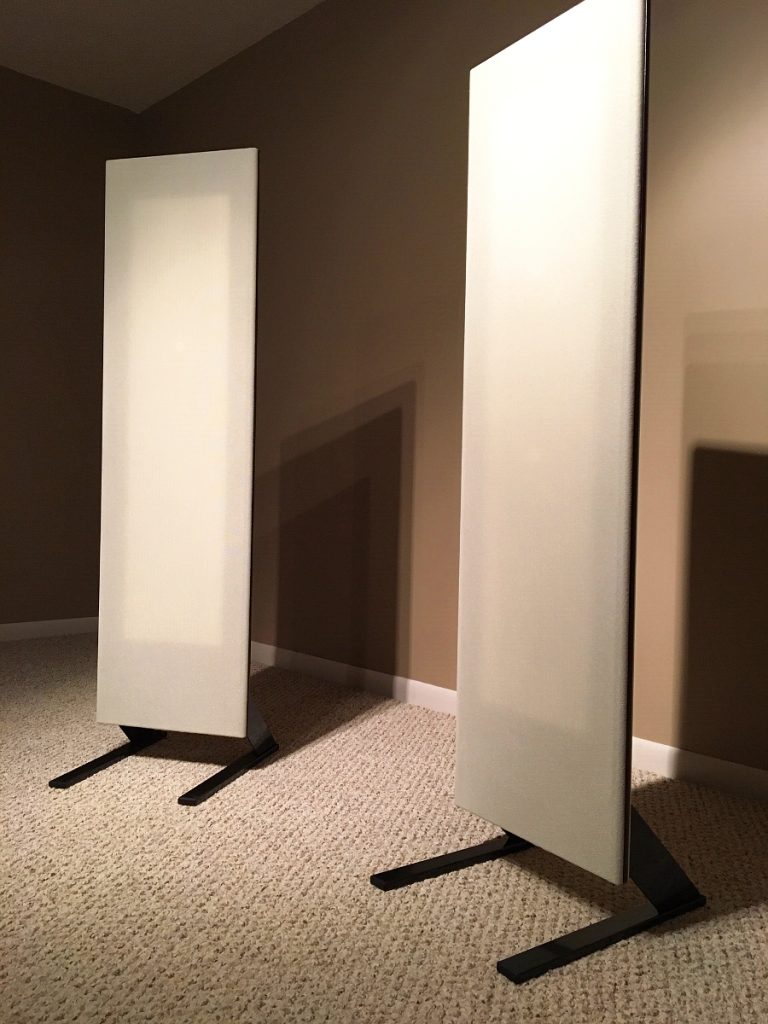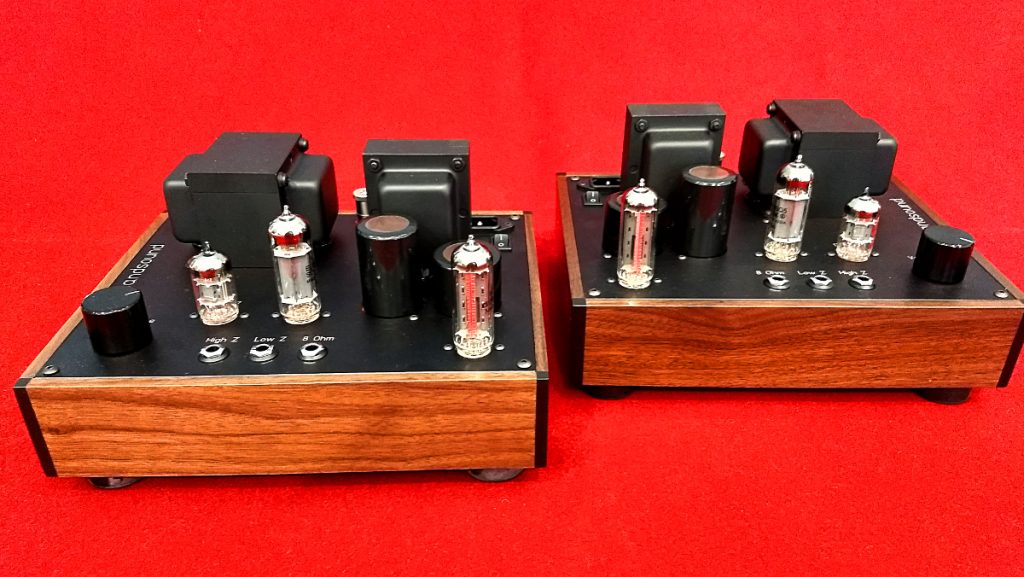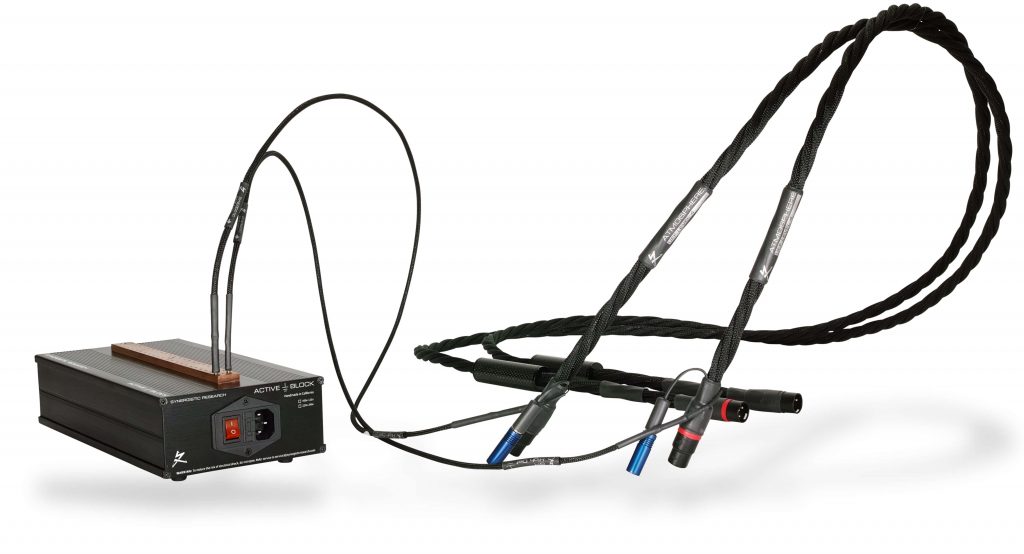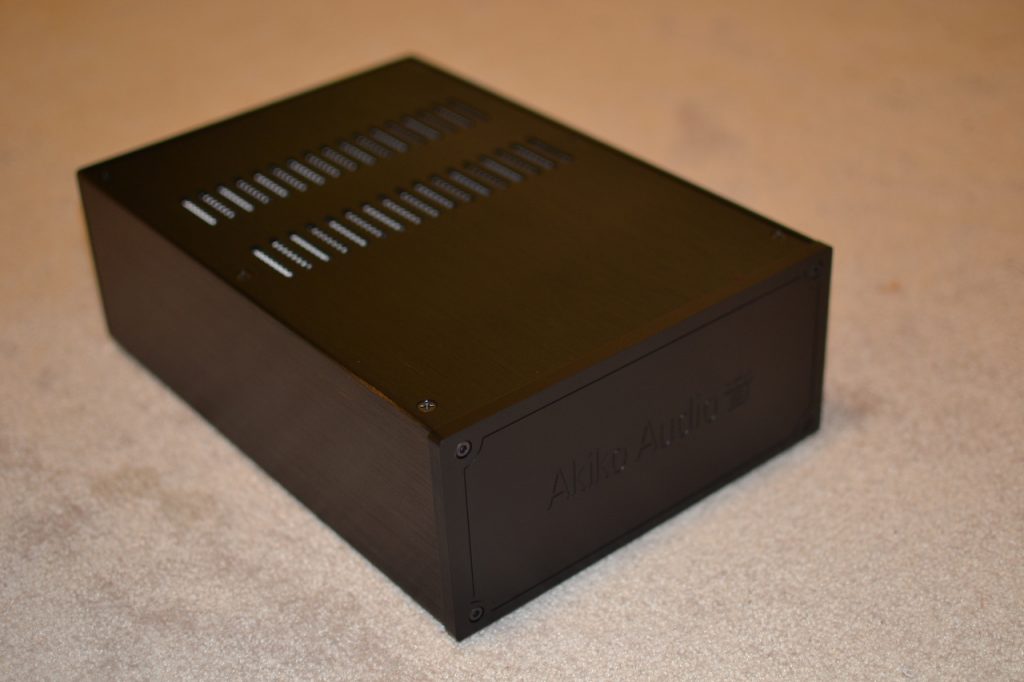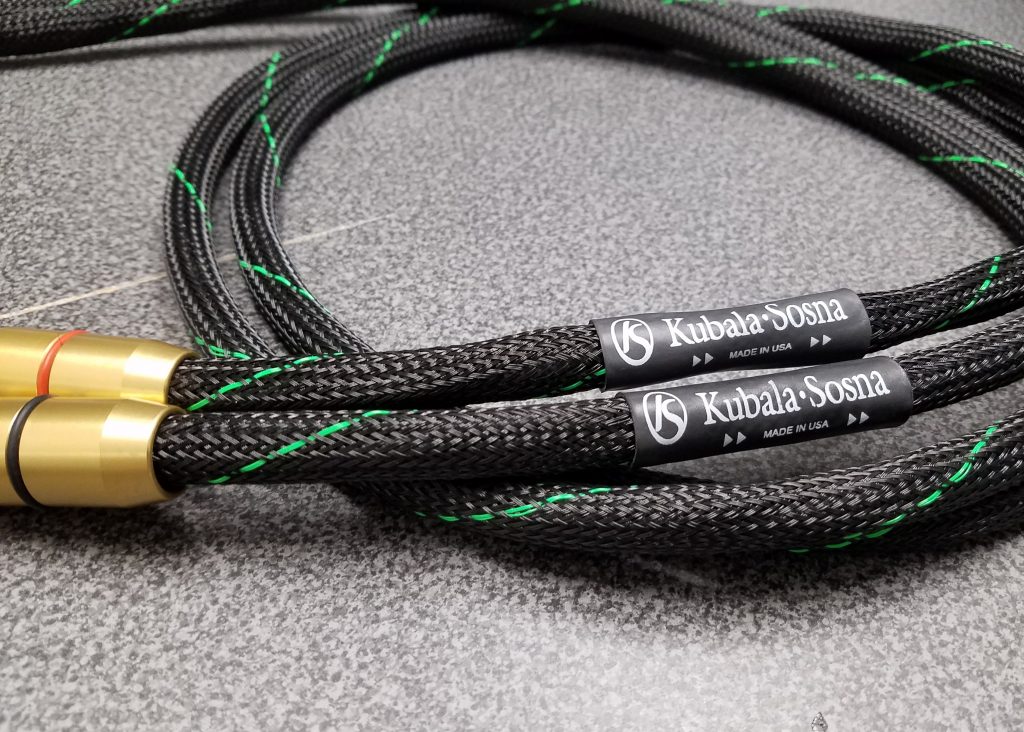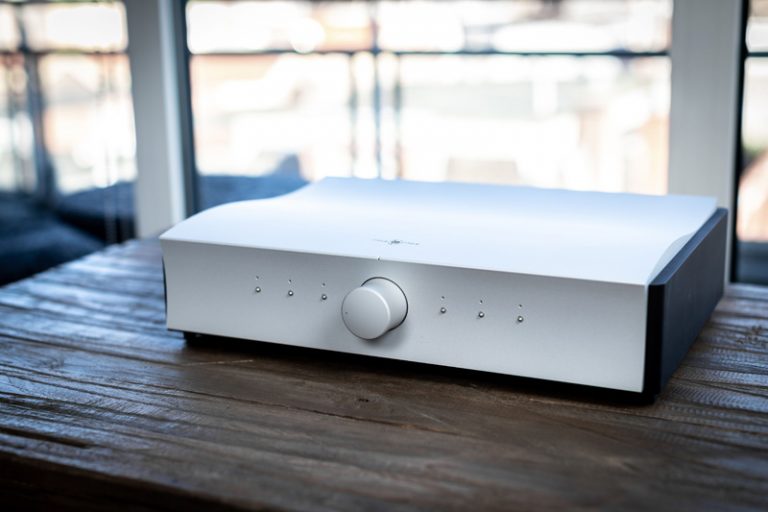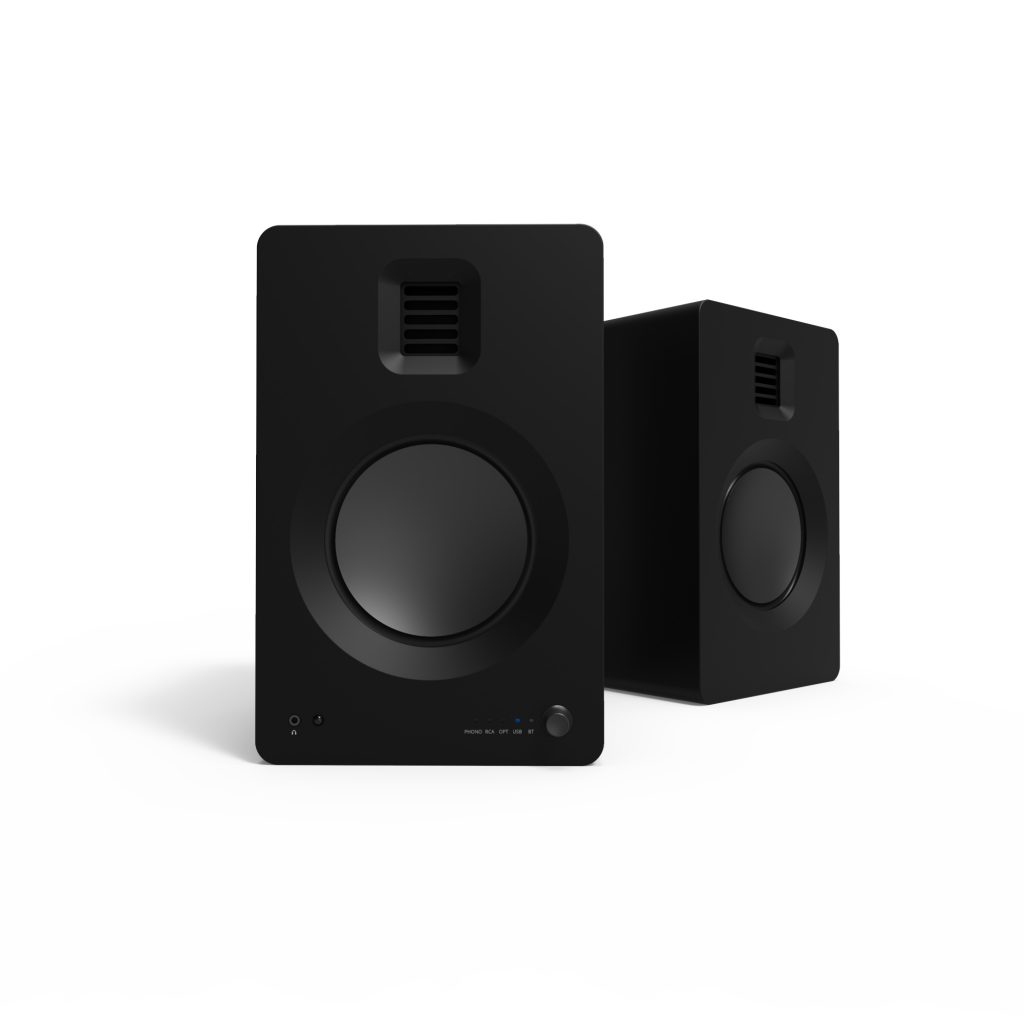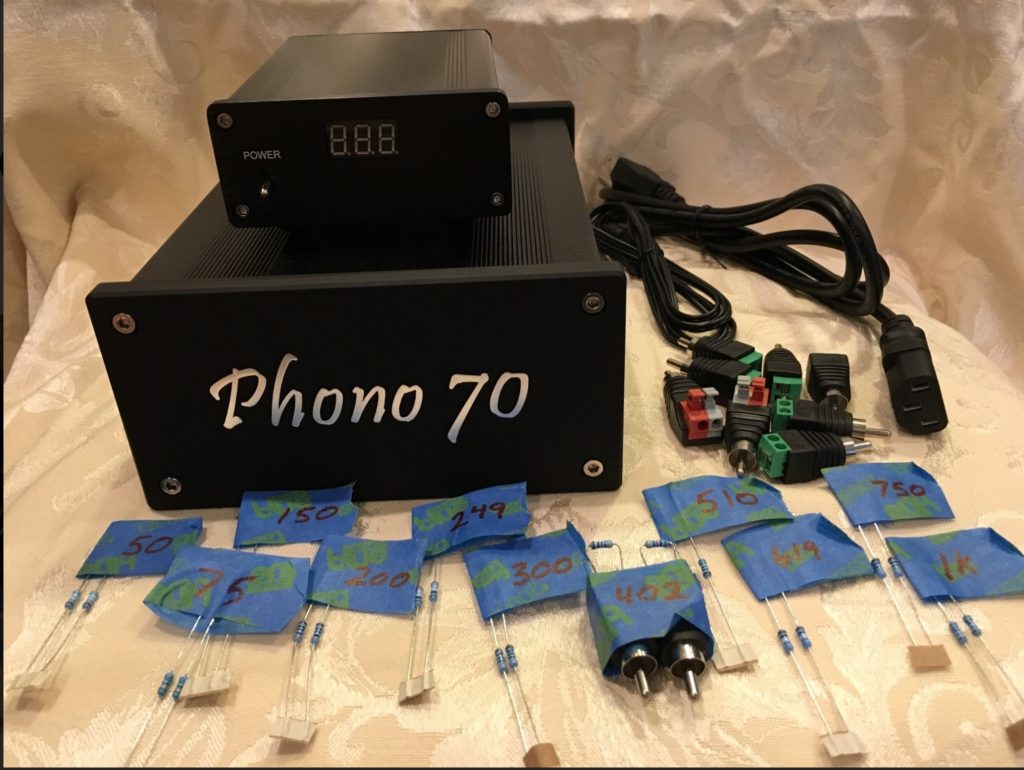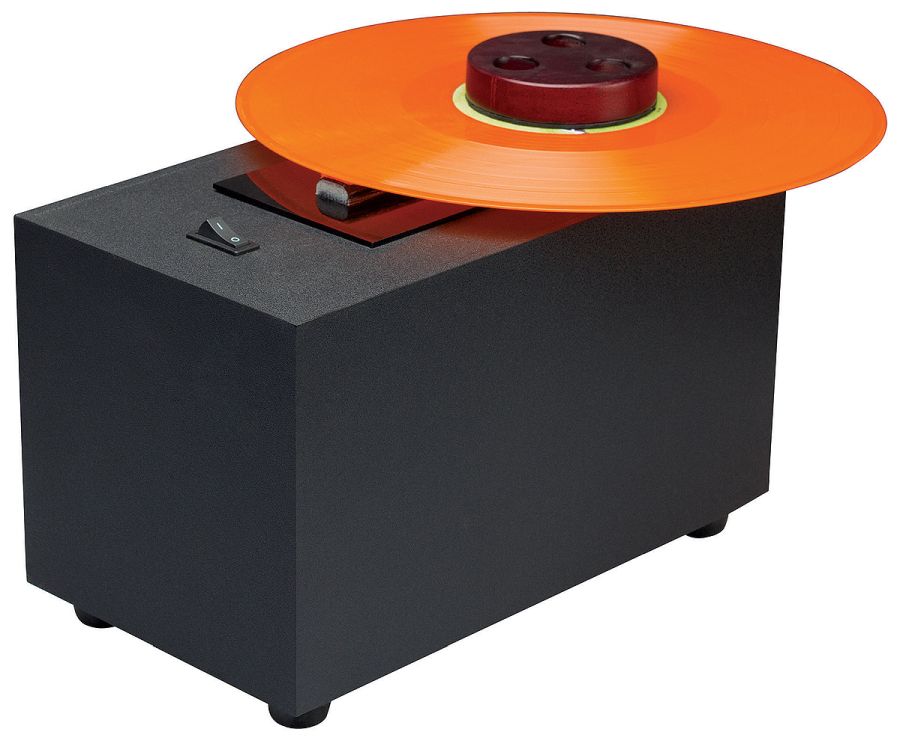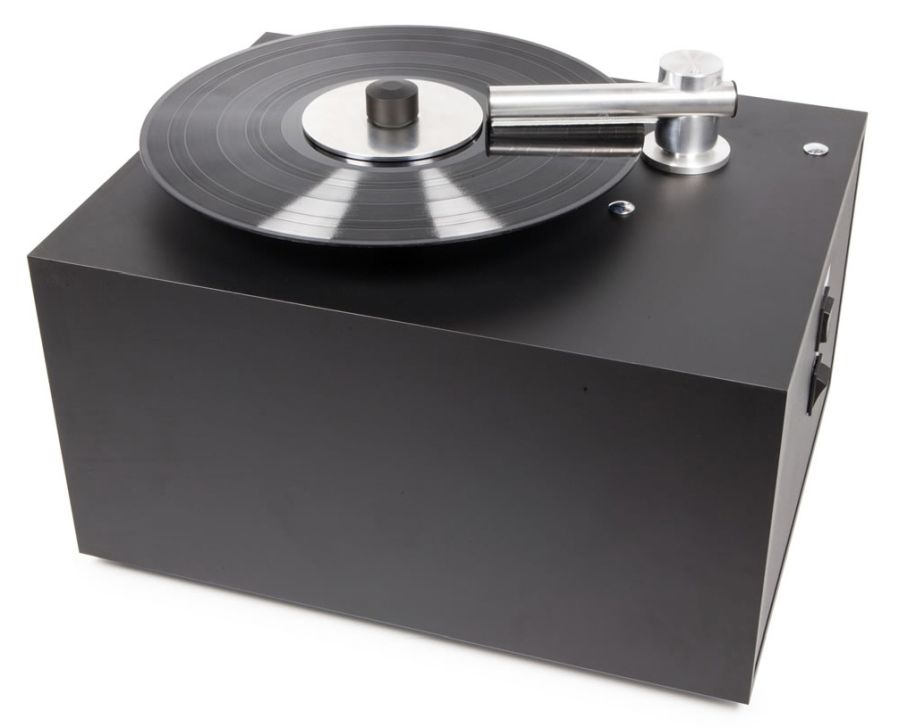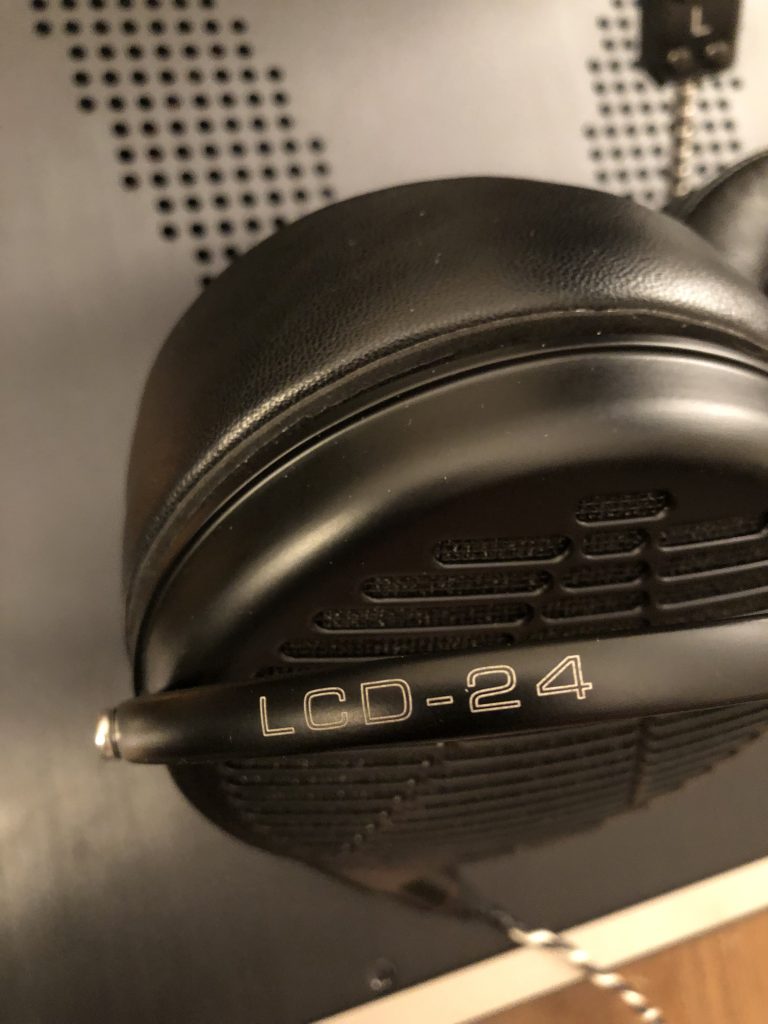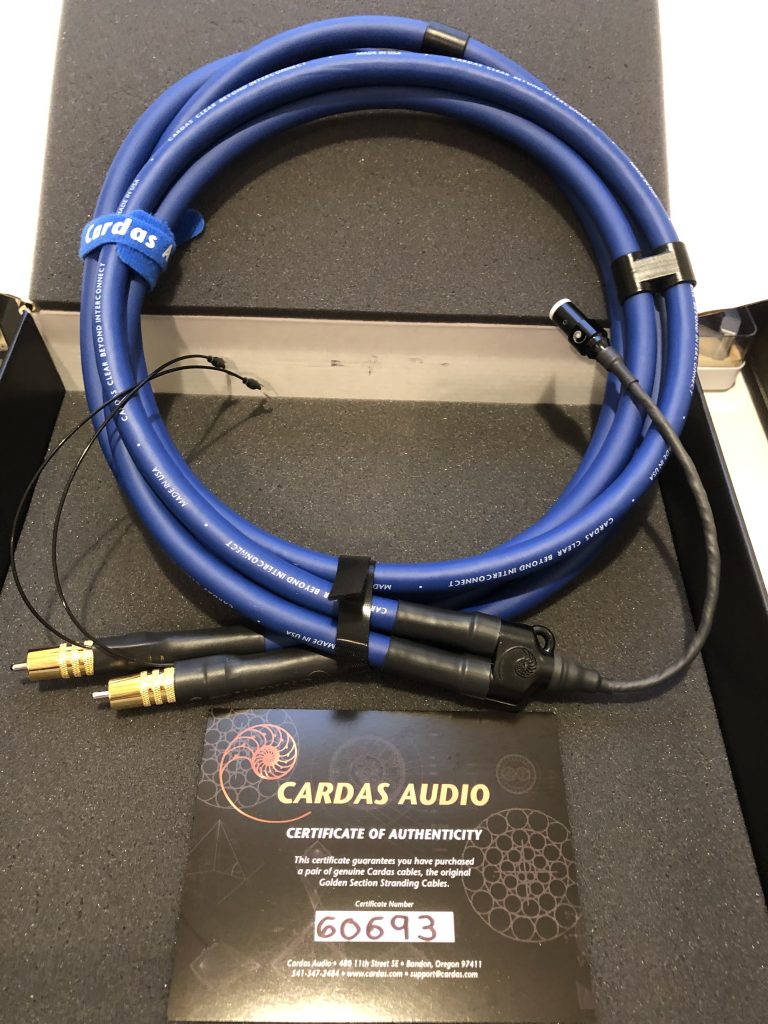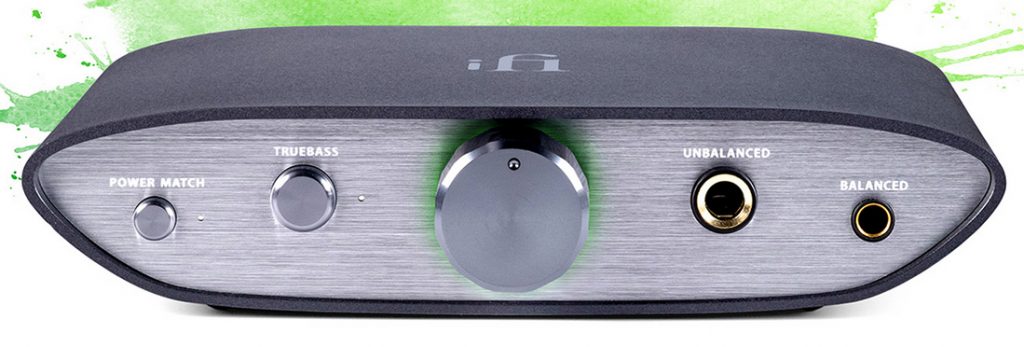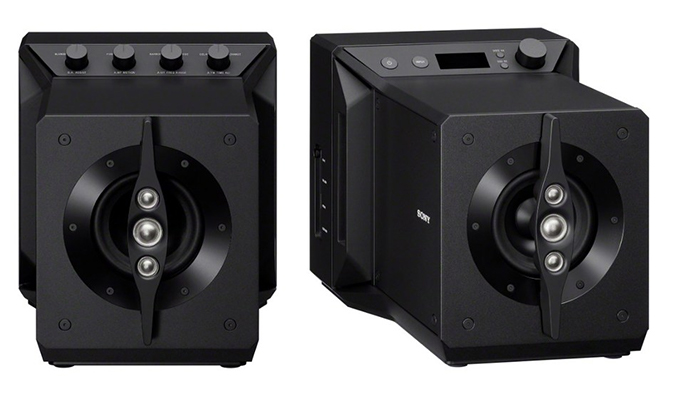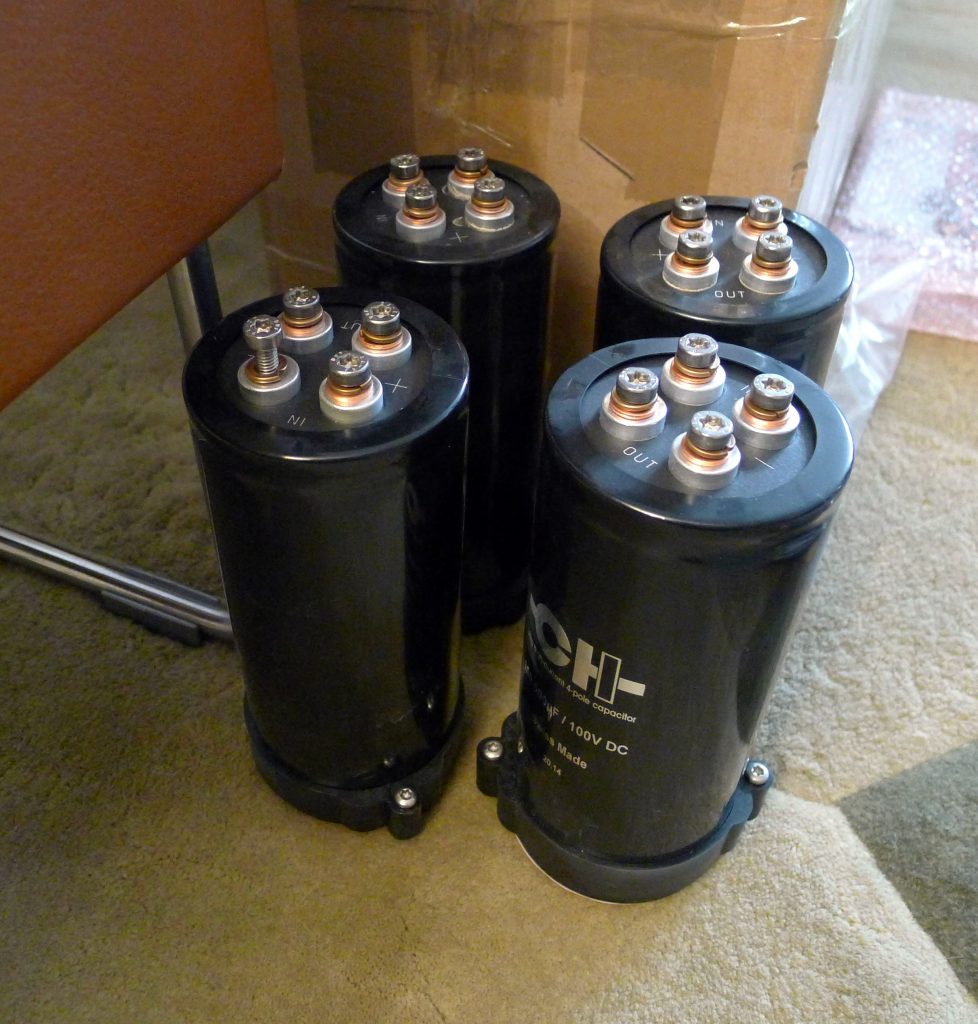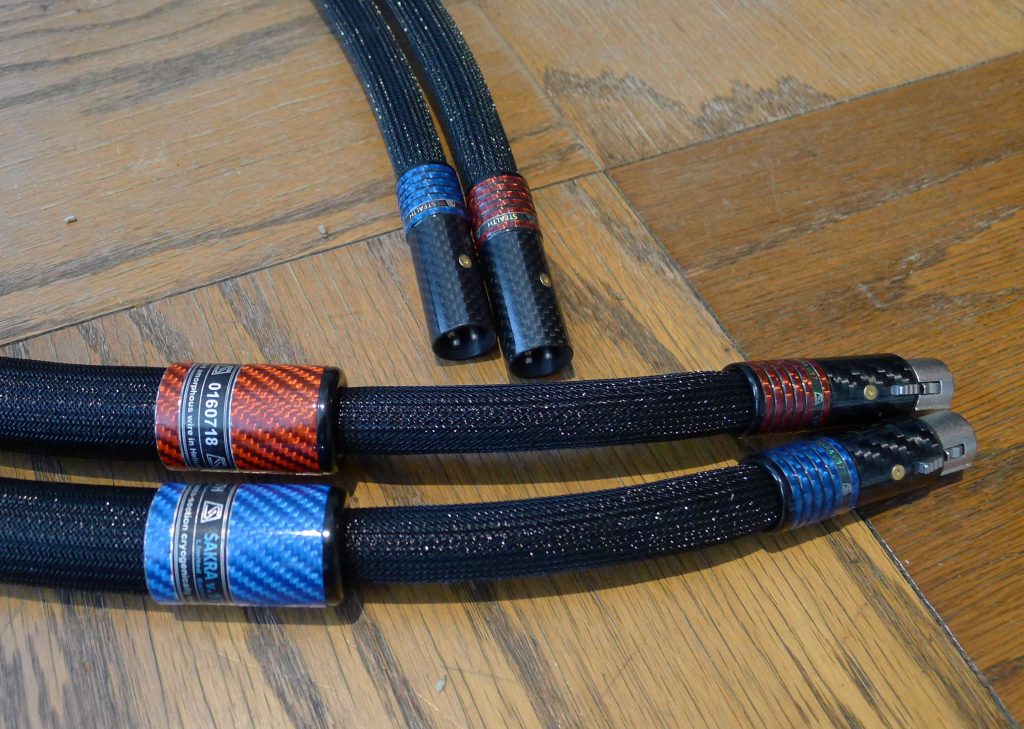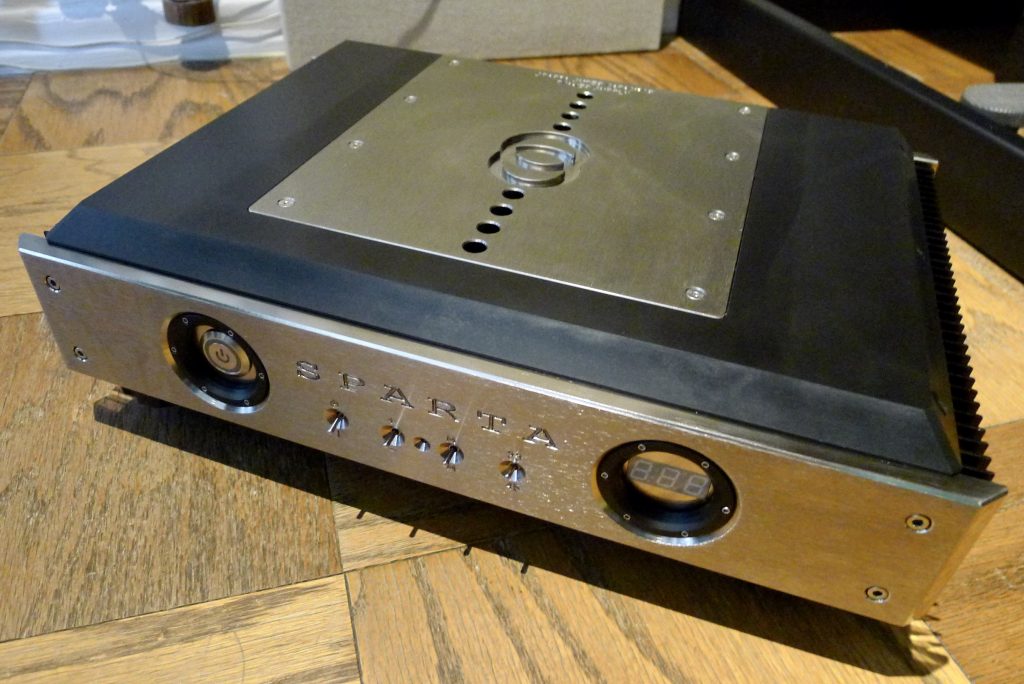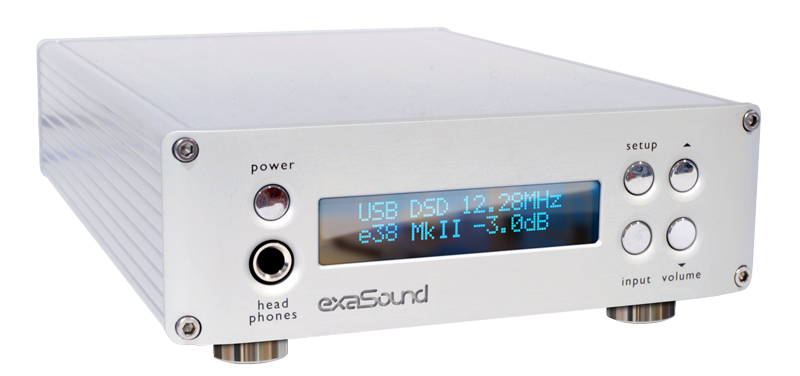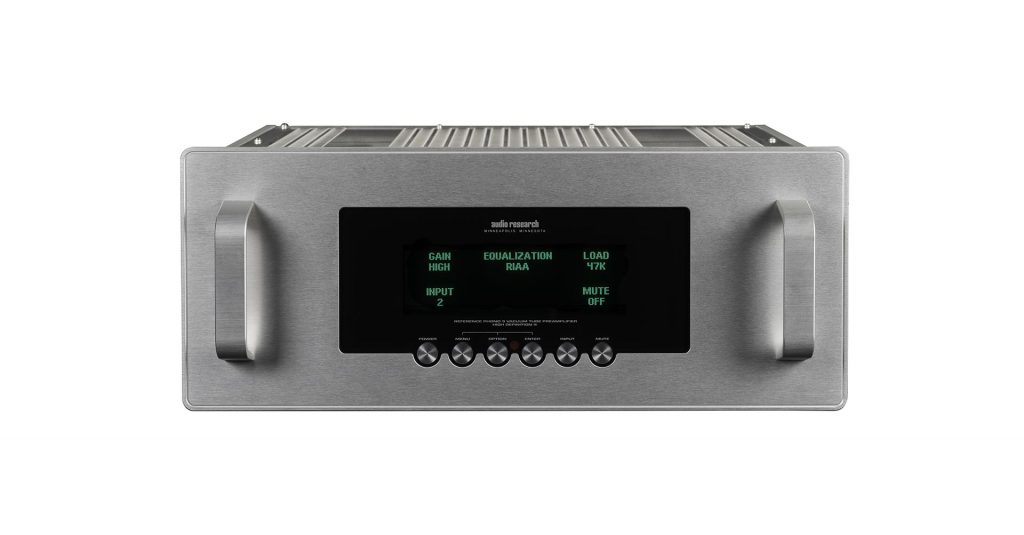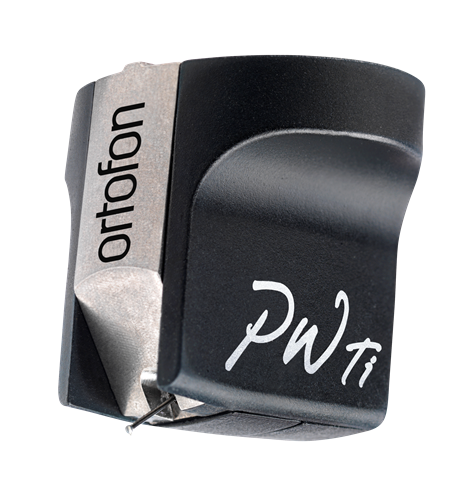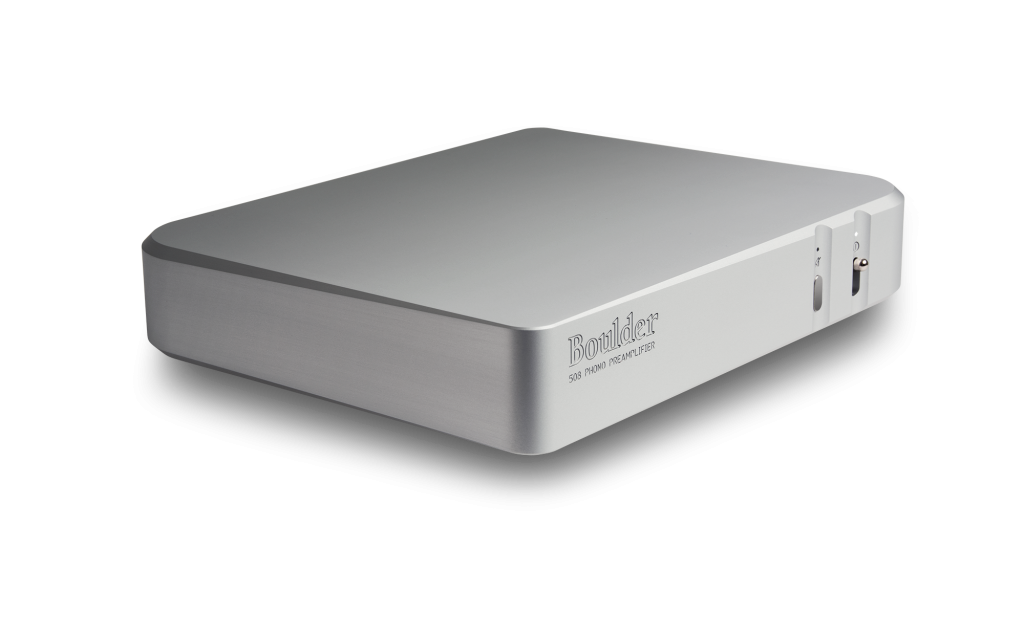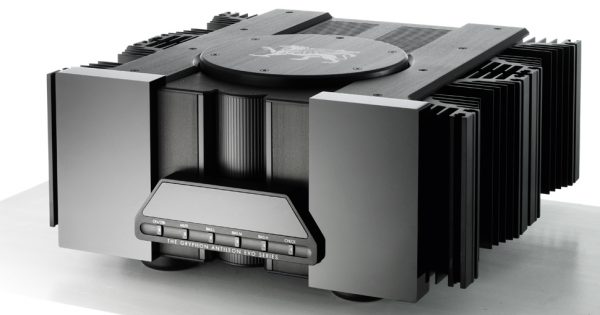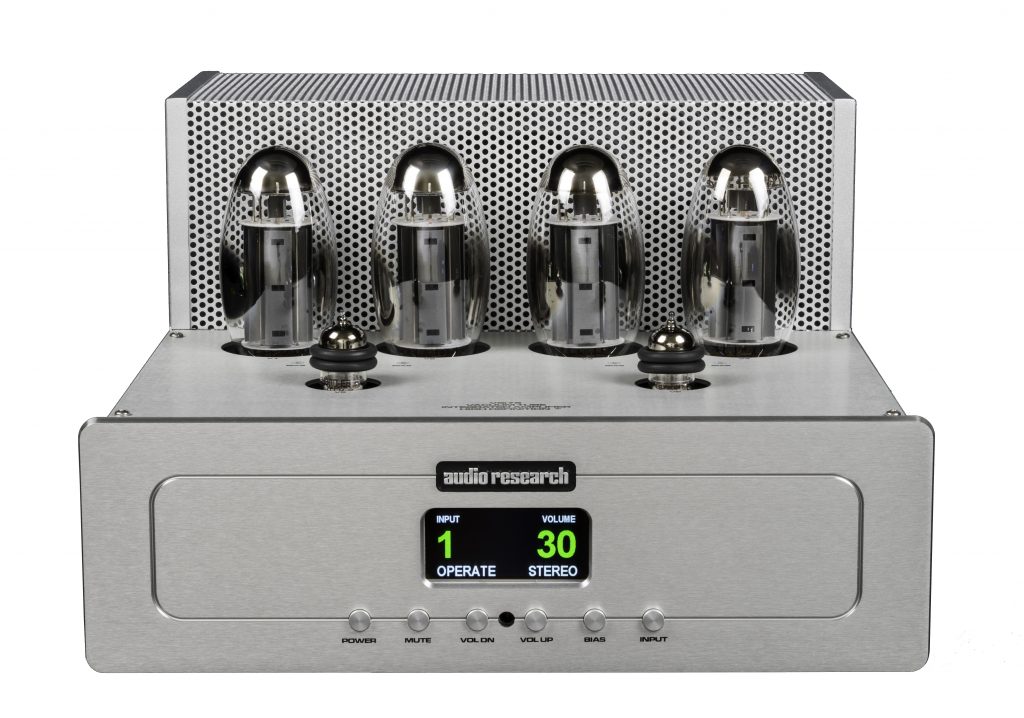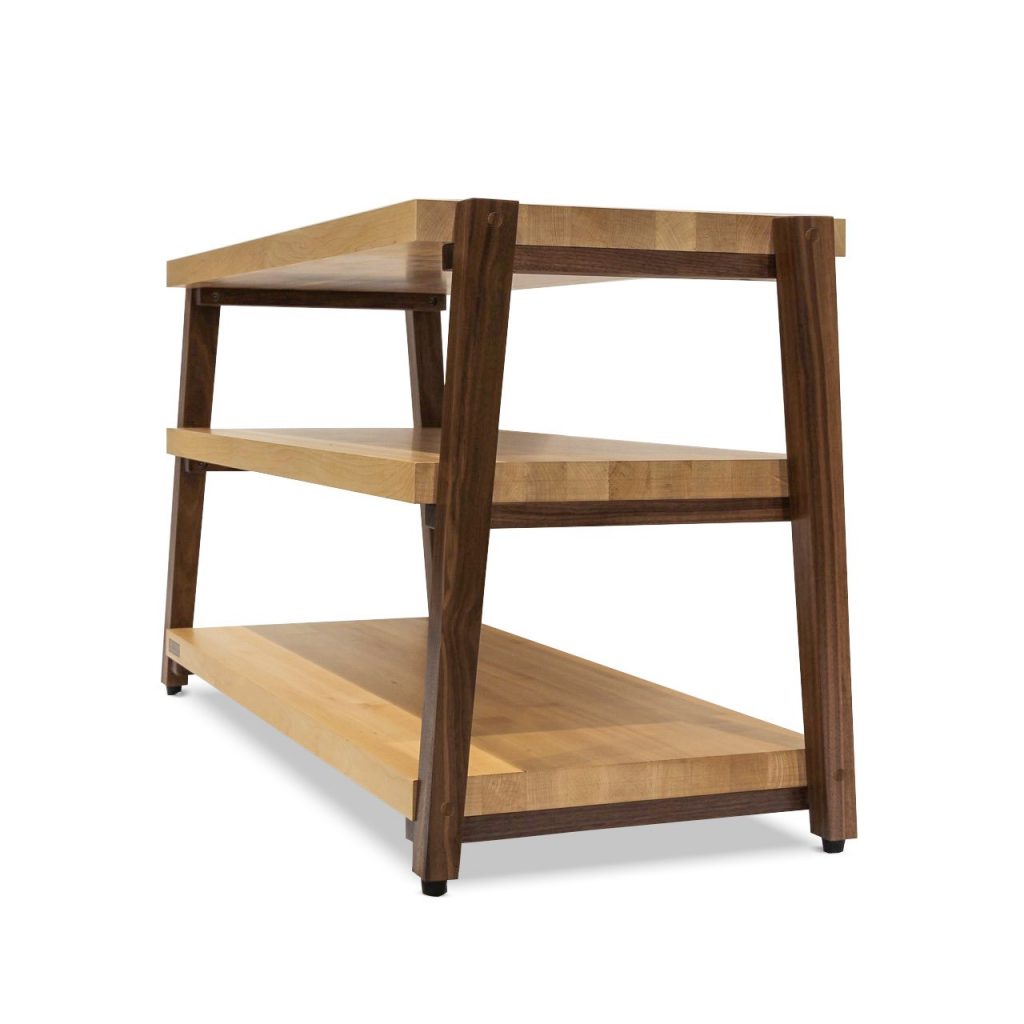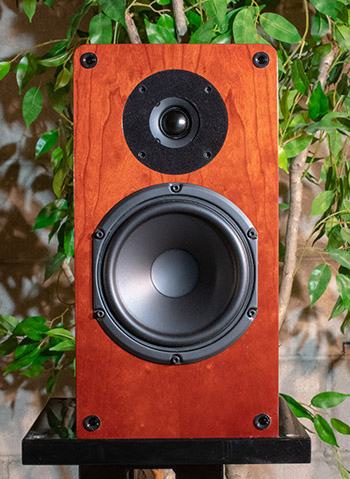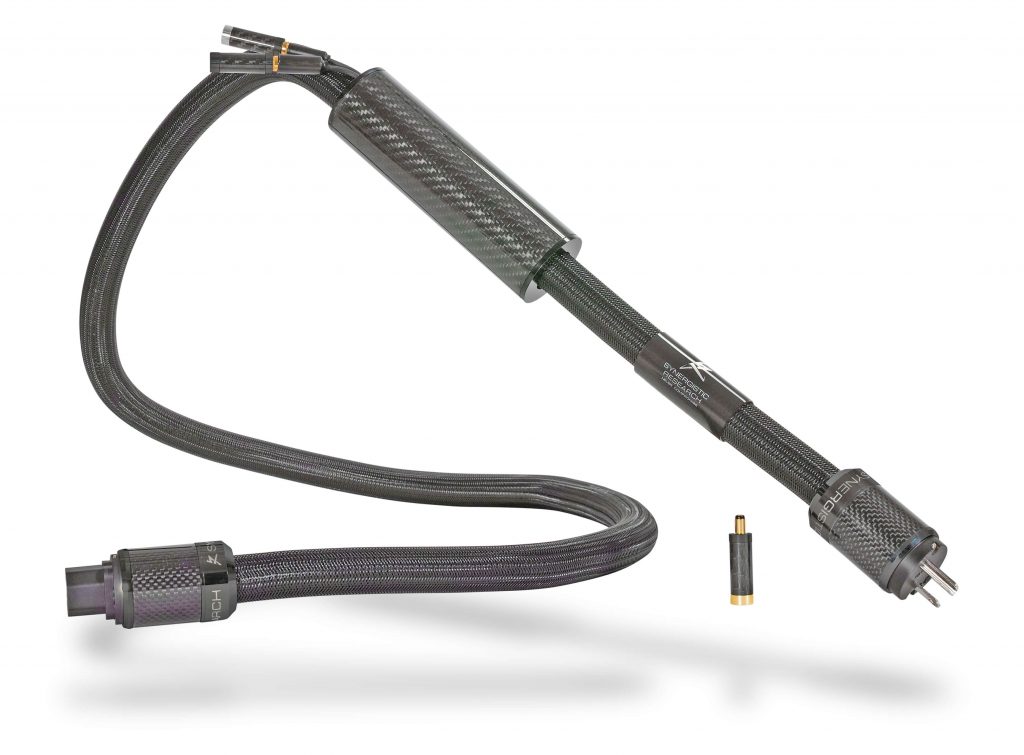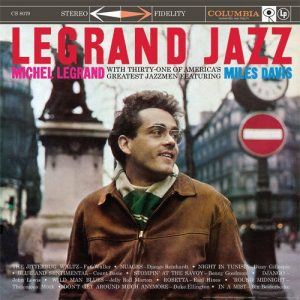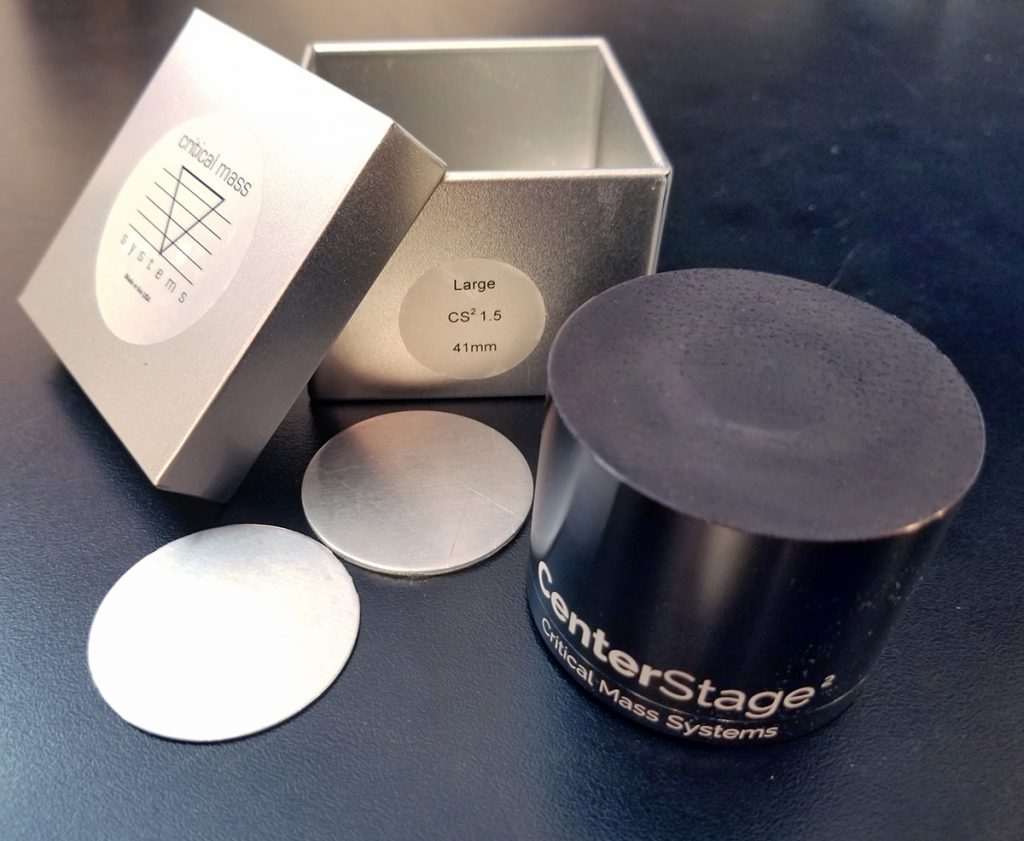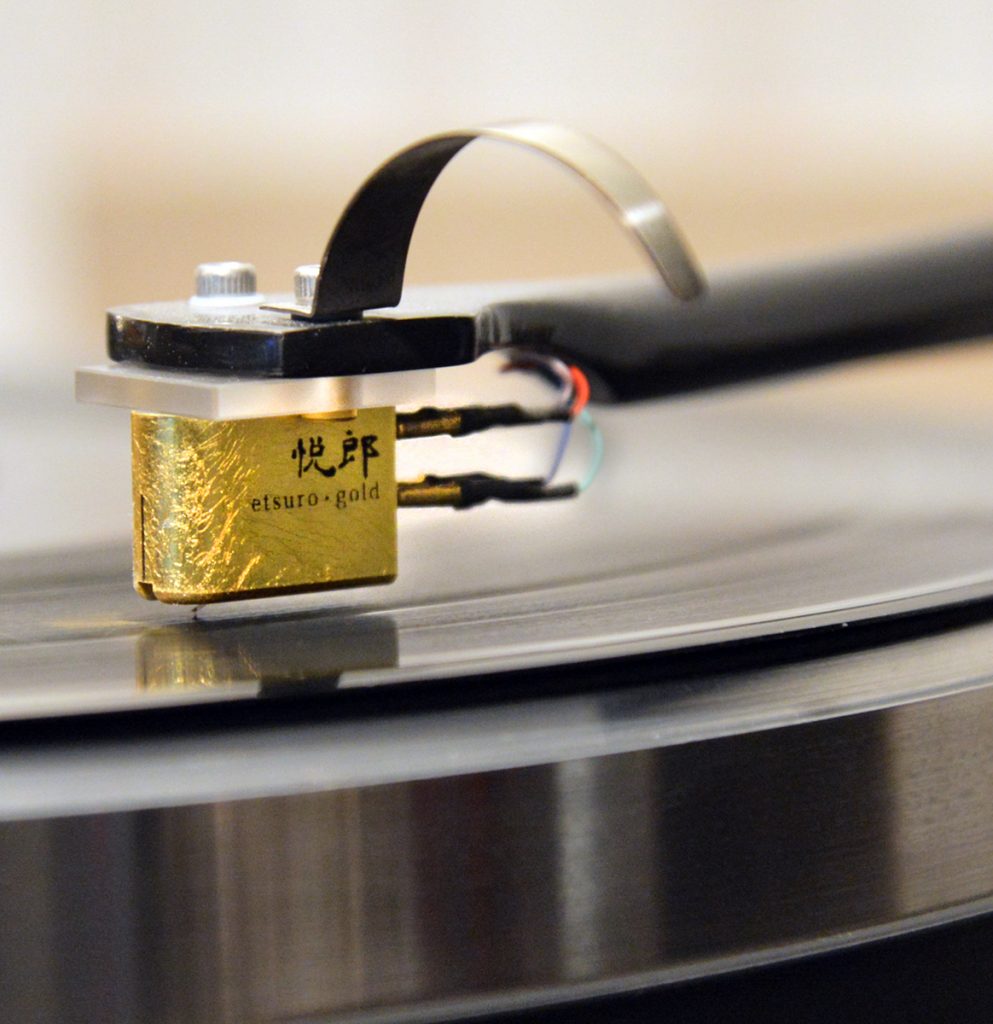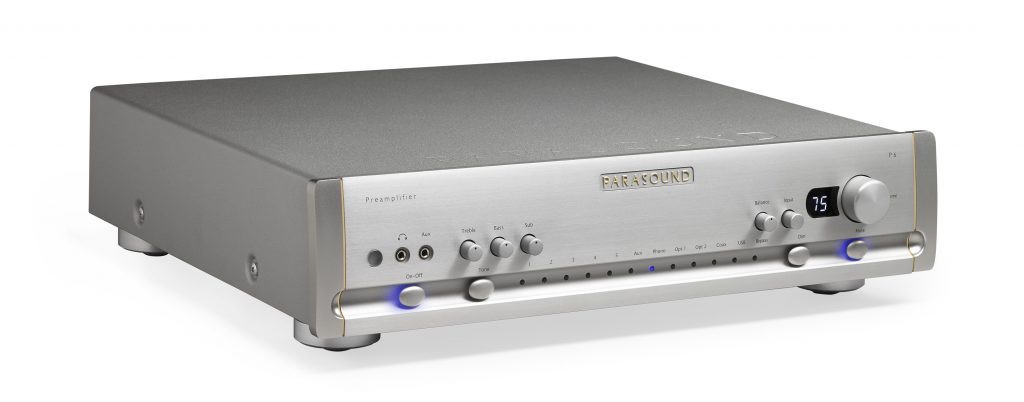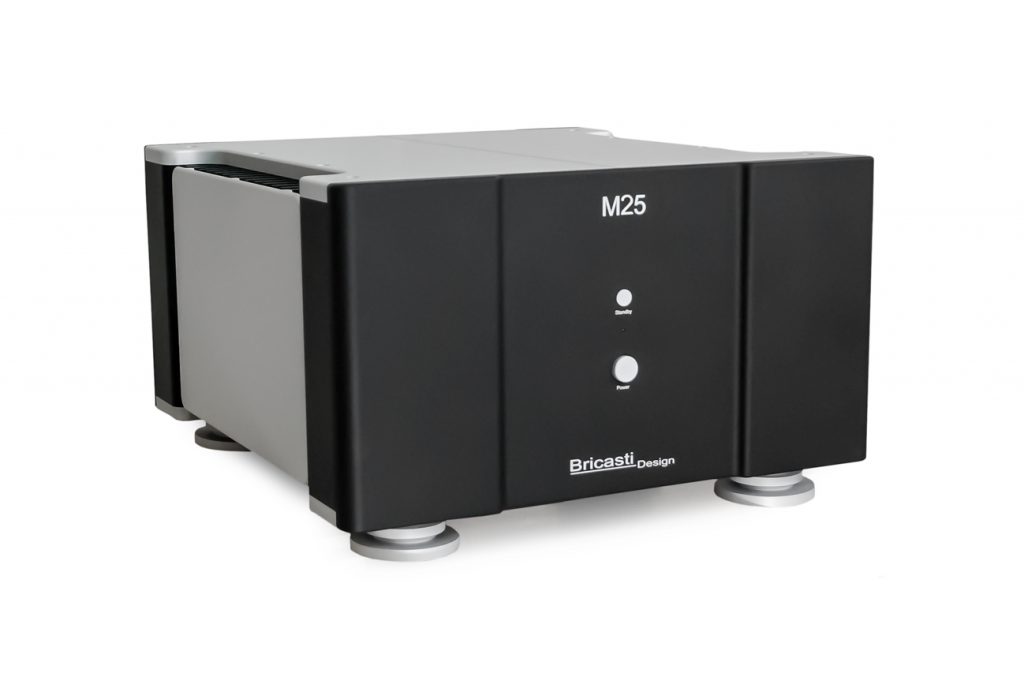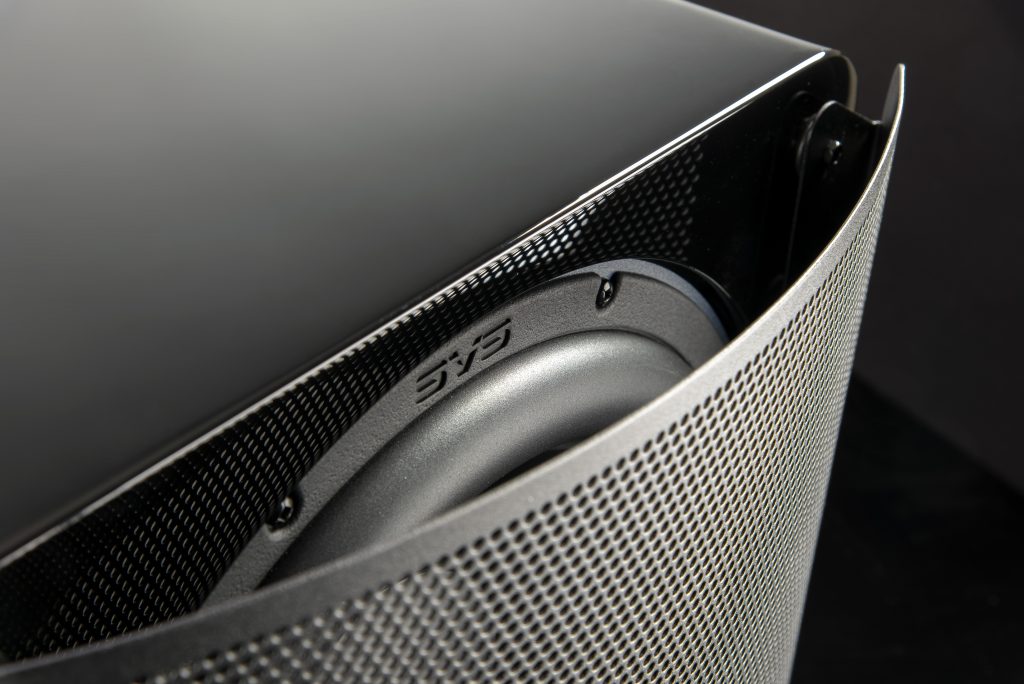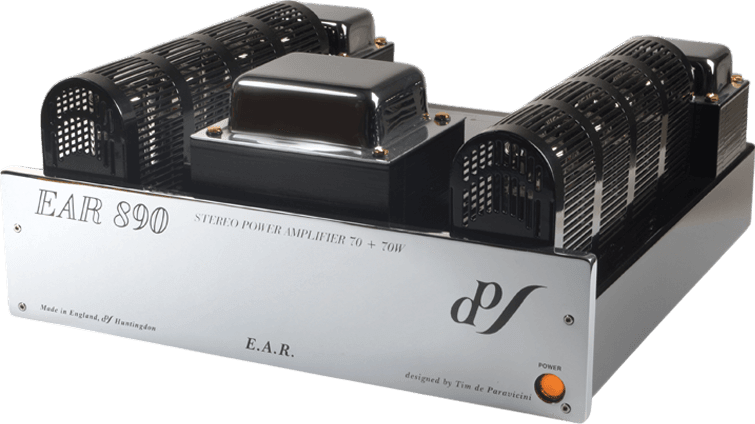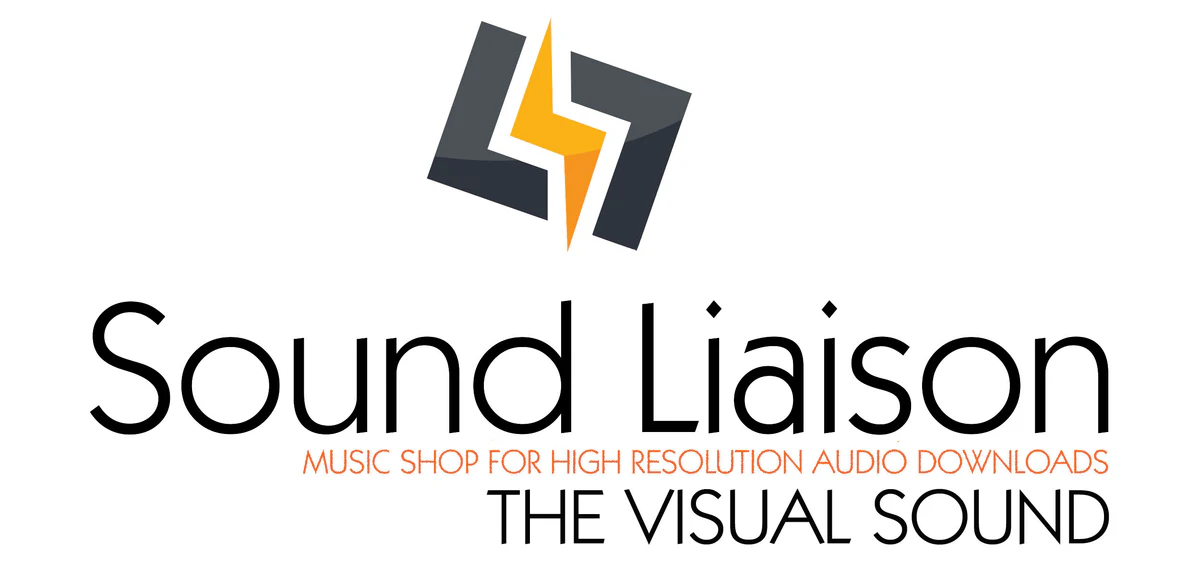Beginning at the end of 2003, PF established its first annual awards for fine audio. The Brutus Award was established for the best that David Robinson and Dave Clark (and Carol Clark) had heard in their own listening rooms during that year. You can think of it as our equivalent of an "Editors' Choice" award.
The Gizmo Award, on the other hand, was established in memory of our very good audio friend, Harvey "Gizmo" Rosenberg, and is given by David Robinson to the most conspicuous audiomaniac(s) of the year. Only one Gizmo is given per year; some years, no Gizmo is given at all.
The following is an opportunity for our editors and writers to recognize superior merit in the audio arts though their "Writers' Choice Awards." Our writers and reviewers have been given broad leeway to cite excellence in fine audio wherever they find it: products, people, recordings, events, groups, etc., so that our readers can be better informed.
It is our hope that you will find the PF Writers' Choice Awards to be helpful to you in your audio journey.
All the best,
Positive Feedback
Myles Astor
Swedish Analog Technologies SAT LM-12 Tonearm $31,500
Swedish Analog Technologies LM-12 is the finest tonearm I've had the chance to use in my thirty plus years of reviewing. Marc Gomez's essentially one off, handmade, laminated composite carbon fiber tonearms define the state-of-the-art in analog playback.
It's not when all is said and done the arm's standard setting bass, harmonic textures or control of the music that stand out the most. Or the massive soundstage, realism and low level resolution when combined with a Lyra Atlas SL or Fuuga cartridge. Or the arm's reel-to-reel tape-like dynamic explosiveness, especially in the low end. No. What really stands out about the SAT LM-12 is its neutrality and ability to simply disappear from the picture and allow top flight cartridges to strut their stuff. Yes, the arm is expensive but the SAT LM-12 tonearm never disappoints and really delivers the goods.
Read more HERE
Ensemble Dalvivo Power Cords $1500/2 meters
There's an awful lot to like about these Ensemble cables, not the least of which being the lack of outrageous claims. No 100 year old wire originally obtained from the only copper mine in Antarctica and treated with negative pi-mesons at Los Alamos. No, just solid engineering courtesy of designer Urs Wagner. Ensemble Audio's Dalvivo power cords are constructed using 7 x AWG 14 pure copper wires woven in a helical array with special attention paid to shielding, screening and resonance. The result is a somewhat stiff but medium weight power cables with low impedance, capacitance and inductance.
The Dalvivo power cord is match made in heaven for that audiophile who's been searching high and low for a balanced sounding power cord that lies between a) super detailed and b) quiet and pleasant but colored. Ensemble's power cords are extremely linear and transparent and really excel at recreating voices. The low end is solid, dynamic and controlled and images are extremely visceral and locked in. You'll hear the subtlest inner details when playing back the best reel-to-reel tapes. One will need to spend a spend a lot more money to get a small improvement.
Review coming soon
Merrill Audio Element 116 Power Amplifiers $22,000 per pair
The real question isn't whether a piece of electronics sounds like tubes or transistors. Or Class A, AB, or D. No. The true question is whether the equipment sounds like real music and does justice to the music? The answer is an unqualified yes in the case of the Merrill Audio Element 116. (In fact, many people might not be able to determine if these amplifiers were solid-state Class D or tube if blindfolded. Or at least very confused.) Merrill Audio's 300-wpc (into 8 ohms and doubling down to 2 ohms) Element 116's monoblock amplifiers draw from the technology used in Merrill Wettasinghe's bigger and top-of-the-line Element 118s previously reviewed by David Robinson (HERE) and use the same ultra-high speed gallium nitride transistors in an open loop, no feedback circuit design.
The combination of the Element 116s and Magico S5 Mk. 2 speakers make for an amazing sense of dimensionality and low level resolution. Voices are uncannily revealed and the amplifier's transparency lends a real sense of airiness to recordings. Merrill Audio's newest generation of amplifiers are in a completely different league compared to the previously reviewed Veritas amplifier. For instance, the new monoblock Element 116 don't have the slight coldness of the earlier Veritas amplifier and are super quiet, resolving and easy on the ears. Don't pass these amplifiers by!
Review coming soon
Ensemble Massimo Fuoco Integrated Amplifier $15,000
There are days when I dream of what it would be like to having my living room back. No two huge tube amplifiers residing on my living room floor and heating up my listening room even in the coldest winter days. Enter Ensemble's Fuoco Integrated amplifier that disappears quite nicely into my Silent Running Audio Craz rack. This hybrid tube input, solid-state output integrated amplifier also succeeds where many others fail. Rather than representing the best of both worlds, they're the worst of both technologies. Ensemble Audio Fuoco's tube uses specially sourced NOS British and German ECC81 tubes in the input stage and bipolar transistors in the output stage.
The most surprising aspect of the Fuoco's performance was its low end. My reference Magico S5 Mk. 2 speakers ruthlessly expose bass issues, and the Fuoco controlled the speakers with a firm hand on even the most challenging cuts. Higher up the Fuoco demonstrated its tube lineage on vocals and instruments with it harmonic recreation. Yet the Fuoco is super quiet despite the use of tubes in the input stage. Definitely a product for audiophiles looking to simplify their systems without sacrificing sound quality!
Review coming soon
Software of the Year
New Recording: 15 ips, 2-track Reel-to-Reel Tape
Davy Knowles: Still Got Work To Do, International Phonograph, Inc., Davy Knowles (guitar), Andrew Toombs (organ), Michael Caskey (drums), Tod Michael Bowers (bass); Anthony Gravino (engineering), Jonathan Horwich (Assistant Production), recorded Shirk Studios, Chicago, February 6, 2019, direct copy from 8-track master. Website: internationalphonographinc.com. Price: one reel, $150 (production copy from safety)
There's a reason diehard audiophiles swear by the sound of 15 ips reel-to-reel tape and all it takes is one listen—no make that one song or less—to Still Got Work To Do to let you know why. This simply spectacular, all new, all analog, direct-to-16 track recording stars Isle of Man born and bred blues-rock guitarist Davey Knowles and his band on this hard hitting album. The music, especially on "When You Lose a Friend" or "Still Got Work To Do" will have you dancing around accompanying on air guitar. Couple that to a near sonic orgasmic experience with the tape's unfettered dynamics, tone, transparency and in your room lifelike feeling and we're talking one of the very, very best tapes in my collection. (a pure DSD 256 or other digital file versions are also available at High Definition Tape Transfers.)
Reissues of the Year
Michel Legrand, Legrand Jazz, Columbia/Impex 45 rpm, Original recording 1958. Mix down transfer (Mark Wilder), Mastered by Chris Bellman at Bernie Grundman Studios, Don Hunstein original photography. Website: impexrecords.com
Impex's reissue of Michel Legrand's Jazz is a fitting to tribute to the late French master of arrangements who passed away earlier this year at the age of 86!
1959 in jazz stands out for of the release of Miles Davis' Kind of Blue, Brubeck's Time Out, Charles Mingus' Ah Um, and many other albums (of course Coltrane's Giant Steps was recorded in 1959 but not released until 1960). But 1958 was, however, no slouch either with the release of Miles Davis' Milestones, John Coltrane's Blue Train, Cannonball Adderley's Somethin' Else, as well as Legrand Jazz that showcased Columbia Record's vast army of jazz artists. Impex Records originally reissued Legrand Jazz at 33 rpm, and late this year released the even slightly better sounding 45 rpm version. Legrand Jazz features eleven arrangements by Legrand, with three different ensembles showcasing the likes of Miles Davis, Ben Webster, Hank Jones, John Coltrane, Bill Evans, Paul Chambers, Major Holly, Art Farmer, and many more plus a new glossy jacket and gatefold booklet with essay on the recording by KCRW Tom Schnabel.
Legrand's arrangements with their sudden unexpected twists and turns, unusual use of instruments, etc., such as on the opening track "Jitterbug Waltz" stand out here. Plus that beguiling sound of a "big" jazz ensemble/orchestra. Legrand Jazz with its massive soundstage, sense of spaciousness and layering of instruments is arguably the best sound to ever come out of Columbia's historic 30th Street Studios. Instrumental tone is uncanny as is the reverb and extended decay on Ben Webster's sax on the second track. You will without doubt cue up the first track and not stop playing until the last note of the last track!
Dvorak: Violoncello Concerto in B Minor, Opus 104; Bruch: Kol Nidrei, Opus 46, Antal Dorati (conductor), London Symphony Orchestra, Janos Starker (cello), recorded July, 1962, Watford Town Hall, London, UK, Mercury Living Presence/Analog Productions SR90303 (45 rpm). acousticsounds.com
Chad Kassem never does anything half-way. It's either all in or nothing at all for today's acknowledged King of vinyl records. Here Chad gave Tom Fine (son of Mercury's original founders Robert Fine and Wilma Cozart Fine) and Ryan Smith (mastering engineer at Sterling Sound) free reign to give this famed Mercury Records recording the remastering it richly deserves. Nothing was left to chance. Tom and Ryan mastered this album in the same manner as his parents did back in the 1962: Tom reading the musical score and Ryan manually controlling the cutting lathe. The only difference is that Acoustic Sounds' 45 rpm reissue was sourced from the backup 15 ips, ½ inch, not original 35 mm master tape. The original 35 mm master tapes have, unfortunately, deteriorated to a point where they are no long usable. (So any comparison between original and reissue are moot.)
This classic 1962 Mercury Living Presence recording finds Dorati leading the renowned London Symphony Orchestra with a then young Janos Starker on cello. You know you're in for a wild ride from the opening note of the fiery opening movement moving onto the slow emotional trappings of the second movement and climaxing with the stirring, dance-like, third movement. Bruch's Kol Nidrei is an added bonus. This new Acoustic Sounds reissue—whether it's the Fine/Smith treatment or the different master tape (or both?)—markedly improves on the original recording's sense of space, dynamics and solidity/stability of Starker's "image" while minimizing the Mercury string sound. One last thing. The time Tom and Ryan spent cutting multiple masters to get one quiet cut really paid dividends in the end. This is a super quiet recording allowing the tiniest nuances of the original recording to emerge unscathed. Highly recommended.
Special Mention
Jerome Sabbagh and Greg Tuohey: No Filter, Jerome Sabbagh (tenor sax), Greg Tuohey (guitar), Joe Martin (bass) and Kush Abadey (drums), www.jeromesabbagh.com.
Just for the record, there's a contingent of young New York City jazz artists who lead double life as both musicians and audiophiles. They're devoted to their music and love good sound too. Jerome and Greg, who first hooked up some 20 years ago while attending Berklee, decided after many years of talking to help fund their new project with the help of Kickstarter. The result is the all analog (ATR 102 tape deck run at 30 ips, ½ inch tape), all tube, No Filter recorded by James Farber at Sears Sound in New York. Bernie Grundman then mastered the lacquers from the master tape for the resultant LP. No Filter is jazz that speaks to many people and features four original pieces written by Greg and three original compositions by Jerome (the band originally recorded eleven pieces and then narrowed the choices down to their favorite seven). The album's end piece "You Are on My Mind" by Jerome with its sense of ease is one of my favorite songs on the album. Or take the short piece "Cotton" that as Jerome says stands out for, "its lack of improv and pure effect." One caveat. "Vicious," the first piece on the album, isn't quite up to the sonic standards set by the later pieces; so enjoy the music on the first cut and then sink down into your listening chair and especially enjoy the sound of Greg's guitar and Abadey's drums on the rest of the album.
Tim Aucremann
Kuzma 4Point Tonearm $7090
The Kuzma 4Point tonearm continues receiving praise from audiophiles for its precision construction, ease of adjustment, and contributions to achieving quality sound from vinyl records. Largely unmodified since its introduction in 2008, Franc Kuzma recently upgraded the bearings in his 4Point arms to achieve an even higher level of performance. Although unannounced until January 2019, all 11-inch and 14-inch 4Points made since July 1, 2018 have new bearings. Existing 4Points are upgradeable to the new bearings.
The 4Point tonearm's unique bearing system makes it one of the very best on the market today and the addition of jewel bearings makes for a genuine improvement. The 4Point offers transparency and resolution across the frequency spectrum, top-notch dynamics with excellent articulation, noteworthy in the mid-to-low-bass regions.
With jewel bearings the arm delivers a more lifelike, less mechanical sound with richer tonality and improved articulation. The net effect of the upgrade to my ears was immediate acceptance of an overall more natural sound.
The 11-inch Kuzma 4Point with jewel bearings, bi-wire option and Crystal Cable silver/gold wire retails for $7090 (USD). The upgrade to an existing Kuzma 4Point to new jewel bearings retails for $1950.
Read more HERE
Lamm Industries LP2.1 Deluxe Phono Stage $10,990
Clad in deep matte black with a single red LED on its front face, the Lamm LP2.1 Deluxe could be mistaken for a Grumman skunkworks stealth project. Don't let the absence of knobs, dials, or bling fool you. Inside are vacuum tubes taken from Russian military radar with circuitry designed by Vladimir Lamm, a man who builds audio products based on his empirically derived electro-mechanical models of how we hear with the ears we have.
The LP2.1 is a pure class-A single-ended phono stage that, despite its five vacuum tubes, is extraordinarily quiet. It supports MM cartridges with a gain of 40dB and moving coils with 60dB of gain thanks to an internal Jensen step-up transformer. (A 70dB transformer is an option.) I used the default version with a 0.35mV Fuuga cartridge with no problem and the LP2.1 worked spectacularly with a 1.1.mV output van den Hul Colibri Master Signature. As I turned up linestage volume to 52 clicks for the Fuuga, the LP2.1 yielded no more noise than it did at volume 1.
I found the sound of the LP2.1 immediately engaging and natural. It is quick and textural, with a fine sense of subtle harmonic gradation, and plenty of low-end weight. From violin solos to quartets to full-bore orchestral offerings I did not find myself thinking about it or wishing for something more or something less. Simply put, the LP2.1 is believable.
This unit has been around for a while yet it remains viable today. Given its performance relative to phono stages in its price category and even those twice its cost, the Lamm phono stage is a genuine bargain.
Review coming soon
Gary L Beard
For 2019, I've awarded my Writer's Choices to gear that offer extraordinary value, compelling performance, or in case, both.
Benchmark Media Systems LA4 Line Amplifier $2495
A Hi-fi Bargain
The LA4 is a small form-factor, tour-de-force of engineering excellence. While lacking the headphone capabilities of its HPA4 sibling, the LA4 offers an amazing array of useful set-up options. It is a pure line stage with a mastering sound heritage, having no noticeable sound signature of its own. The LA4's highly resolved neutrality performed admirably with several solid-state amplifiers; including a perfect partnership with Benchmark's own AHB2 amplifier. In the top dollar world of high-end audio, the LA4 is firmly in bargain territory. Well done, Benchmark.
Read more HERE
Daedalus Muse Studio Loudspeaker $11,799 as reviewed
A Compelling Choice
The Muse Studio is highly deserving of a Writer's Choice award. It is strikingly gorgeous, and offers truthful, high-energy, easy-to-drive, studio monitor-like performance. It can be placed virtually anywhere, from corners to nearfield, thus bringing true high-end sound to nearly any room. The Muse Studio's combination of extreme resolution, incredible tone, and fabulous imaging demands attention. In the Muse Studio, Daedalus Audio's master builder Lou Hinkley, has created yet another incredible bespoke loudspeaker for audiophiles. Only this time, it's for those of us with smaller rooms.
Read more HERE
Linear Tube Audio Microzotl Preamp $4450
Love by a Thousand Kisses
The LTA Microzotl preamplifier is an easy Writer's Choice. It sounds fabulous, and in my system, the MZ was without a noticeable weakness. Encased in a beautiful Fern & Roby skin, the Microzotl features a well executed design, excellent controls, and a great headphone amp. It is a center-field shot to the parking lot, home run. The MZ is a high-end preamp for those without Ferrari budgets. As soon as I packed it up, I was already missing it.
Read more HERE
Michael Corsentino
Levin Design Sandwich Vinyl Mat $295
My reference turntable mat for the last two years has been SPEC Corporation's SPEC Analog Disc Sheet AP-UDI. This Japanese made lacquer-encased aluminum disc is the one all others have been judged against. That's why when Levin Design contacted me with news of their new Sandwich Vinyl Mat, I was excited to see how it would stack up.
German based Levin Design does a masterful job creating must have turntable accessories that not only do a great job but also look sexy as hell doing it. Case in point their luxurious line of designer record cleaning brushes. Everything Levin creates looks like it's right out of the Museum of Modern Art's gift shop. I'm a sucker for beautiful design so that's a good thing!
Levin Design Sandwich Vinyl Mat is a clever two sided, three layer design comprised of Napa leather on top, high tech resonance dampening material in the middle, and a layer of anti-static carbon on the underside. These 29.5cm diameter discs are available in three Napa leather designer colors: yellow, red, blue and black. I opted for red to add a splash of color to my otherwise monochromatic turntable color palette.
When you're not using the Levin Design Sandwich Vinyl Mat you flip it over so that the carbon side and etched Levin logo are face upward. This keeps the Napa leather side clean, dust free and ready for your next spinning session.
In terms of sound quality both the SPEC mat and the Levin Design Sandwich Vinyl Mat do a superb job and cost roughly the same. With the Levin I noticed a lower noise floor compared to a bare platter and comparable compared to the Spec. I also heard an added sense of sonic stability, increased coherency, wider imaging, heightened detail, and deeper bass. In other words everything you want from a mat.
When it comes to style The Levin wins hands down. The Levin also delivered a slightly more relaxed sonic presentation compared to the Spec, not a bad thing and probably due to its softer Nappa Leather top. In terms of it's anti-static properties I did notice a reduction in static so we can check that box too.
The Levin Design Sandwich Vinyl Mat does everything a best in class turntable mat should do and it does it with a lot of style! At $295 it's not cheap, but in my opinion as with all as with all things Levin its well worth it! It's my new reference.
You might think a writer's award based around a product getting serviced is a weird call but hear me out. I dislike it as much as the next guy when gear fails, but it's how a company handles those problems when they arise that separates the wheat from the chaff and speaks loudest about them. There are no shortage of companies eager to sell you their latest and greatest, but how firmly do they stand behind what they sell? How do they treat you once a sale is complete and there's no more money on the table? In many cases that's a completely different story. When an issue arises with one of your audio system components, the way a company handles it can quickly become just as important as how their products sound when functioning properly. It's all part of their brand experience and either an affirmation you made the right decision investing in their equipment or a cautionary tale thanks to a bad bet.
Full disclosure, the majority of my reference system for the last 2 years is comprised of PS Audio's BHK lineup. It's safe to say I'm a major fan boy of their house sound and company going in. After 2 years with zero problems things took a left turn shortly after installing PS Audio's recently released free OS update Windom on my DirectStream DAC. Windom, by the way, sounds absolutely amazing, and is worthy of its very own writers award. Ted Smith has done it again, bravo!
I enjoyed Windom immensely listening to Russian Jazz Trio LRK's CD "If You Have a Dream" via my DirectStream Memory Player, but after that initial listening session it was lights out for my DirectStream DAC. No DAC, no digital content, bummer! Try as I might going through the normal trouble shooting steps: reinstalling the OS, back button power cycle, unplugging and replugging the mains, removing the SD card, IS2 cable, Ethernet cable, and still no luck. No matter what I did I couldn't get the DirectStream DAC to move past its blinking blue standby button startup sequence, which indicates it's in the process of booting into the units software. I searched online forums for known issues, reached out to several fellow PS Audio owners for suggestions, all to no avail. Time for a call to PS Audio's crack tech support team.
T.J. at PS Audio fielded my call, and was only too happy to help walk me through a series of troubleshooting steps to eliminate the variables that replicated much of what I already tried. With each successive effort failing my sense of dread increased, as I knew I was getting closer and closer to having to ship my DAC out to Boulder, Colorado for service. Between shipping and service I assumed this meant being without my digital front-end for several weeks, and the sting of shipping fees loomed large as this unit is fairly heavy and ships in a large box. Before doing that T.J. suggested we try a software fix that necessitated a fresh SD card formatted at HQ with a new OS which he promised to overnight. Sure enough the next morning the SD card arrived. Unfortunately this and a second overnight SD card containing rescue software and a different OS the following day both failed.
At this point it was clear to T.j. and I that this bad boy needed to go back to the mothership for a look see. What came next surprised me in the best way. T.J. said he'd email me a label for second day shipping service and have the repair turned around within 24 to 48 hours, after which PS Audio would ship it back to me second day air all at no cost to me! I was seriously blown away by all of this. My unit is under warranty, but it never came up, perhaps they looked it up based on my phone number. There was no demand for a credit card to cover shipping either way, there were no extended repair timelines, nothing. There was only a desire to get my DAC repaired and back into my hands as quickly as possible, and at great expense to PS Audio I might add. Between the 2 overnight SD cards and second day air service for a 26lb DAC from Florida to Colorado and back again easily approaches $300 in shipping fees on the open market. In other words, that's what it would have cost me! I had my DirectStream DAC back in my system in matter or days rather than weeks, with zero out of pocket and new found respect for PS Audio and how they do business. To coin a phrase - gob smacked!
I had to ask T.J. whether this was something they did for everyone, or special treatment reserved for reviewers. He quickly assured me that I wasn't that important—thanks TJ! It turns out 2 day round-trip shipping and two day repairs are available to every PS Audio customer with products under warranty. This level of service made it clear to me that PS Audio knows how to take care of their customers. It's obvious they're as passionate about the joy of music and pain of its absence as I am. Thanks for the great music and exceptional service PS Audio, you guys rock!
When it comes to streaming services there are essentially 5 things to consider: cost, quality, library of content, the app's user interface, and to a lesser extent playlist curation. French based Qobuz launched in the U.S. market earlier this year, and was nice enough to send me an access code for the purposes of a review. At that point I was firmly entrenched in Tidal, with years of album favorites and playlists. That said, I kept hearing from audiophile friends I respect how much better Qobuz sonics were than what I was getting with Tidal, so I was curious to hear for myself what all the fuss was about. I kept an open mind and dove in.
Qobuz boosts several enhancements and differentiating factors compared to Tidal. The first being that what you're hearing with Qobuz is a stream of high res FLAC files sans the MQA middleman you get with Tidal. That means what you're hearing is the direct FLAC file all the way up to 24-bit 192Khz, depending on the source material. The result absent MQA is a more natural, pure, and pleasurable sound.
The Qobuz iOS app is also capable of high res streaming via iPhone or iPad while the Tidal app caps the steam at 16/44 CD quality. That means Qobuz members can stream their high res music on the go. Qobuz also offers unlimited downloads for offline listening.
Unlike Tidal, Qobuz allows members to purchase albums, or tracks, with the cost depending on the level of their membership. If you've been considering giving Qobuz a try, this is the prefect time, their pricing plans have just been combined and reduced, making the service even more competitive, affordable, and appealing to a broad spectrum of listeners. Quboz also announced they are banishing MP3s entirely, instead focusing exclusively on Hi Res streaming across their plans and platform. Here's how the new plans break down: Studio Premier which streams up to 24/192 drops from $24.99 to $14.99. If a subscriber pays annually, the subscription falls to $12.50 per month.
Sublime+ will be reduced to an annual price of $249.99, or about $20 per month, giving large discounts to download purchases on top of the Hi Res. Sublime+ subscribers can purchase entire Hi Res albums for $9.99 in the file format of their choice: WAV, AIFF, or FLAC, a substantial savings over the Studio Premier plan. These formats are higher resolution than their CD counterparts, so if you want to own a particular album digitally this is a great way to do it. While the FLAC files Qobuz serves up are perfectly suited for high res streaming, a downloaded WAV or AIFF will always sonically trump it. Studio Premier subscribers can still download albums and tracks but the cost to do so increases.
To celebrate their new plans Qobuz is offering Studio Premiere memberships for $14.99 per month to the first 100,000 subscribers who sign up through January 31, 2020! Qobuz also offers a free 1 month trial so it's easy to try out!
Qobuz content is continually being updated and expanded, boosting a catalog of forty million tracks with two million in Hi-Res. Tidal sometimes offers content only up to CD quality, while Qobuz will have the same in high res, etc. Qobuz seems particularly strong in the areas of classical and jazz, but there is more than enough rock, world, and every other genre to keep any music lover busy for a lifetime. With very few exceptions you basically have access to virtually unlimited high res music at your fingertips, wherever you go.
It's also worth noting that each track streamed results in compensation for the artist who created it. It's nice to know that your membership dollars help support the artists you love to listen to. Roon users will also be happy to learn that Qobuz is fully integrated from Roon 1.6 forward.
At the end of the day, the ultimate litmus test with streaming services is sound quality. Switching platforms is a big ask once you're dug in with a service. It means recreating favorites, playlists, etc., but if the sound quality is markedly superior, then in my opinion it's worth the effort. From what I understand there is software available from Soundiiz for migrating data from one platform to another, but I haven't taken the time to investigate this further.
Simply put, to my ears, in my system, in my room, Qobuz wins the sonic war over Tidal hands down. It just sounds better—more natural, dynamic, detailed, and open with better imaging than Tidal, and the user interface is clear and intuitive even for the novice user.
Qobuz is is also no slouch in either the metadata or curation department. Artist bio information, links to similar artists, saving favorites, digital booklets, interactive articles, reviews, and playlists are all front and center and easily accessible. While not as fully fleshed out as Roon, Qobuz still presents a thoughtful and well implemented feature set.
Larry Cox
It turns out this year, I only reviewed two components, both of which were excellent. That they're from the same company is a random event, but each component's performance was excellent and most certainly worthy of recognition. Here goes.
ATC SCM 50SE Loudspeakers $64,999
If I won the lottery I'd buy ATC's 50SE (for Special Edition). They are a delight to behold, visually and aurally. Their performance in my listening room annihilated every system I've ever had, even though I was listening through the most modest source electronics I've had in a decade.
No need to hunt high and low for an amplifier, ATC did it for you. Each driver in this ported three way speaker has its own, bespoke amplifier, with power actively equalized. Pair it with a compatible preamp and source and you're DONE! Get your remote, a "listening beverage," and head to nirvana. Note, these speakers are like well polished mirrors, if you don't like what you "see." . . that'll be tough, though this iteration of ATC seems kinder and gentler.
Best suited to mid-sized and larger rooms, these ATCs don't need to be placed in the middle of the room. I was able to place the back plane of the Special Editions within 18" of the front wall without penalty. Tone, timbre, and imaging all remained excellent. Dynamics to scare the cat or the beauty to seduce your significant other. I found my two 15" subwoofers only subtly added to the size, scale, and weight of full orchestral pieces played loudly during crescendos. Your ears, and a desire to hear as you age, will be the limiting factor on how loud you can listen.
As an "A+" performer, small scale, intimate music, felt like a private audition. I have not heard a more realistic rendering of piano or male vocals, ever. Female vocals were as varied as the performers themselves. As the rare "A+"performer, soul was as present as the performer could deliver - and it's amazing to hear how emotionally distant different performers can be. LOVED THEM!
Read more HERE
ATC CDA2 MkII $4249
Robustly built with nearly every feature you might want in the digital age—it's a preamp, no, it's a CD player, no it's a DAC... No! It's all of those. It lacks only a phono stage and the ability to stream music. A Wunderkind that also sounds very good. A lovely balance between ATC's older CA2, entry level preamp, and the SCA2 electron microscope preamp, retaining the "nice" elements of the former and the welcome part of the latter's resolution. Sonically it features very good frequency extension and the capacity to resolve images as well as the tone and timbre of instruments.
With features, performance and a price that make this a component that you purchase to enter high-end sound and the vehicle to leave the revolving door of upgrades. A wise person might purchase this and return to just listening to music.
Read more HERE
Jeff Day
When I receive the message from Editors Dave and David that it is once again time for Positive Feedback writers to turn in our three Writer's Choice Awardsfor the year, I reflect back on my year in audio, the products I've written about for Positive Feedback, and my long-term impressions about them.
Having a limited amount of time to write about audio, I choose only to write about audio products that are innovative and that I think have the potential to be truly exceptional, as well as interesting for you to read about.
That creates a personal drama for me as I down-select to three from a group of high-performance artisanal audio products that I have written about over the course of a year, which each potentially deserve the recognition of a Writer's Choice Award.
First, let me recap my 2019 Positive Feedback feature articles for you, then I'll down select, and tell you who will be the recipients of my 2019 Writer's Choice Awards.
The performance, extraordinary quality, innovation, fit & finish, and custom hand-crafted nature are hallmarks of the Acoustic Revive Absolute Power Cords, RCA Absolute FM Interconnects, and PC-TripleC/EX Headshell leads.
Absolute power cord
The Acoustic Revive Absolute Power Cords, RCA Absolute FM Interconnects, and PC-TripleC/EX Headshell leads are all works of audio artistry that incorporate high-tech materials research & development into their designs, have superb sonic & musical performance, and they are easy recommendations based on their stellar quality, innovation, and performance.
Interconnects
Their only down side is their extraordinarily expensive pricing in the USA, with the Absolute Power Cords in a 2-meter length being $11,950 USD, with additional length by quote. The RCA Absolute FM Interconnects are $11,950 USD for a 1-meter pair, and each additional 1/2 meter adds $5250 USD. The PC-TripleC/EX Headshell Leads are $1075 USD for a set.
Headshell leads
If you have to mortgage the house to buy these, they're probably not for you. If your bank balance reflects a barely noticeable change after buying a full system set of these new Acoustic Revive cables, then these are tailor made for you, and I think you'll be absolutely delighted at the superb performance they offer.
For more information about Acoustic Revive products in the USA, please contact Mr. Joe Cohen at The Lotus Group.
For more information about Acoustic Revive products internationally, please contact exporter Mr. Yoshi Hontani at The Muson Project.
19: Three Simple and Cost Effective Hot-Rod Mods for the Classic Thorens TD-124 Turntable!
I've always thought of the Thorens TD-124 as one of the most beautiful of the classic turntables, which for whatever reason, reminds me of being the 1955 Ford T-Bird of the turntable world, a classic car which I also happen to greatly admire.
TD-124
I treasure my classic Thorens TD-124 turntable, but I had never been fully satisfied with its performance until I installed the Woodsong Audio Thorens TD-124 platter adapter, the SPEC AP-UD1 Analog Disc Sheet turntable mat, and the combination of the Hanze Hifi Thorens TD-124 motor decoupling spring kit and AudioSilente MKII suspension rods upgrade kit, as described in this Positive Feedback article.
These simple and cost effective additions to my Thorens TD-124 transformed its performance, and I can enthusiastically recommend the Woodsong Audio platter adapter, SPEC AP-UD1 Analog Disc Sheet, and the combination of the Hanze HiFi spring motor isolation kit & AudioSilente MKII suspension rods upgrade kit for getting "next level" performance from my Artisan Fidelity Thorens TD-124 Statement turntable, and the fact that it was so easy to do, and affordable, is icing on the cake.
Contact Chris Harban (Woodsong Audio) about his platter adapter ($75 USD) HERE.
Woodsong platter adapter
Contact Jonathan Halpern (Tone Imports) about the SPEC AP-UD1 Analog Disc Sheet turntable mat ($350 USD) HERE.
SPEC disc sheet
Contact Jaap Pees (Hanze HiFi) about the combination of the Hanze HiFi spring motor isolation kit (€39 Euros) and the AudioSilente MKII suspension rods upgrade kit (€60 Euros) HERE.
Spring kit
Rod upgrade kit
July 2019: The Hanze HiFi HAT Turntable Power Supply
Hanze HiFi is a retail hifi store in Zwolle, Netherlands known for treating their customers well, educating their customers, providing great after sales service, and now for building turntable power supplies to improve the performance of your turntable.
HAT PS
The Hanze HiFi HAT Turntable Power Supply is a substantial piece of finely crafted hifi electronics that regenerates wall AC, providing your turntable motor a source of clean AC, and also allows you to lower the voltage to drive your turntable's motor to reduce vibration.
The effects of reducing motor vibration provides substantial performance gains for a phonograph cartridge, and represents an amount of performance improvement beyond what I have experienced going from a $1000 USD to a $10,000 USD phonograph cartridge, for example. I think you would be surprised to find out what kind of performance your current cartridge is really capable of. I was.
HAT w Garrard
I used the Hanze HiFi HAT Turntable Power Supply with both my Garrard 301 (above) and Thorens TD-124 (below) turntables with similarly excellent results.
The HAT Turntable Power Supply for the Garrard 301 and Thorens TD-124 turntables is €1500 Euros and includes 21% VAT, so for export outside the EU you would deduct the 21% VAT.
HAT w Thorens
You might also want keep in mind that the technical team at Hanze HiFi can build you a HAT Turntable Power Supply for whatever turntable you might own, with whatever features you might want, just contact Hanze HiFi for details and pricing.
The Hanze HiFi website is HERE.
The link for the HAT Turntable Power Supply on the Hanze HiFi website is HERE.
To contact Johan, Jaap, and Alexander at Hanze HiFi for more information, you can email them at [email protected]
October 2019: The Duelund-Altec Project – Dare to Dream!
This is an article that tells the story of the successful marriage of the latest state-of-art Duelund Coherent Audio CAST tinned-copper capacitors, inductors, and resistors - in a Jean Hiraga inspired crossover circuit - with the historically important vintage Altec loudspeakers that were custom made for the domestic use of conductor Leopold Stokowski in the early 1960s (hereinafter referred to as the "Stokowski" Altec's).
Stokowski Altec's.
I consider the Duelund Coherent Audio CAST tinned-copper components (capacitors, inductors, and resistors) to be a dramatic advancement in performance for the audio arts, and the level of performance that they brought to my vintage "Stokowski" Altec loudspeakers still has me marveling over their combined performance. Honestly, I can't think of any crossover-loudspeaker combination I'd rather own at any price that is available on the market today - I've enjoyed the results of Duelund-Altec Project that much.
Duelund CAST crossover in Altec
While this is an esoteric and one-off project, and you can't buy these custom vintage Altec loudspeakers, you can build – or have built – a close analog of them is you so desired, or, alternatively, you could use your own current loudspeakers and build custom Duelund CAST tinned-copper crossovers for them. I think you would be blown away by the result just I have been with Duelund CAST tinned-crossovers for the "Stokowski" Altec's.
Duelund CAST XO 2
The Duelund-Altec Project has been the most fun, amazing, and rewarding audio adventure in my over six decades on Planet Earth, and I encourage you to "Dare to dream!" along with me, and build a set of Duelund CAST tinned-copper crossovers of your own.
To discuss ordering a custom set of Duelund CAST tinned-copper components for your own crossovers contact Duelund Coherent Audio's Frederik Carøe HERE for recommendations and pricing.
November 2019: Pass Labs XA25 Class A Stereo Amplifier
The Pass Labs XA25 Class A 25 watt per channel stereo amplifier sounds great, is extremely well built, is reliable, is inexpensive to maintain (no costs beyond the AC it consumes), is relatively affordable ($4900 USD), represents a huge performance value for its price, and it is a powerful and compact amplifier that is able to easily drive a wide variety of loudspeakers, from my sensitive vintage Altec's to much less sensitive contemporary designs.
XA25
The Pass Labs XA25 Class A stereo amplifier is a muscularly powerful solid-state amplifier that belies its conservative 25 watt per channel rating, and it also possesses the organic musicality and charming visuospatial characteristics of the best vacuum tube designs, a combination of performance attributes I thought to be impossible, until now.
Jeff Day's Writer's Choice Awards for 2019
As always, this year's reviews have yielded an impressive line-up of artisanal audio products, and I can recommend each and every one of them to you for your future musical enjoyment.
However, only three can make the final cut, so now for the drum roll announcing my three Positive Feedback Writer's Choice Awardsfor 2019!
I would like to congratulate Mr. Ken Ishiguro (Acoustic Revive), Mr. Frederik Carøe (Duelund Coherent Audio), and Mr. Nelson Pass (Pass Labs) for being my three awardees for the Positive Feedback Writer's Choice Awardsfor 2019—you guys are amazing!
Acoustic Revive Absolute Power Cords, RCA Absolute FM Interconnects, and PC-TripleC/EX Headshell Leads: Ken Ishiguro's Acoustic Revive Absolute Power Cords, RCA Absolute FM Interconnects, and PC-TripleC/EX Headshell leads are superb, and their performance, extraordinary quality, innovation, fit & finish, and custom hand-crafted nature are hallmarks of Ken-san's designs. Ken Ishiguro continues to advance the state-of-art with his audio cables and accessories, and I would like to recognize his contribution to advancing the audio arts with a Positive Feedback Writer's Choice Awardfor 2019. Reader the full article HERE.
Duelund Coherent Audio CAST Tinned-Copper Capacitors, Inductors, and Resistors: I believe that Frederik Carøe's new product line of Duelund Coherent Audio CAST tinned-copper capacitors, inductors, and resistors represent a dramatic advancement in performance for the audio arts. The loudspeaker crossovers created from these Duelund CAST tinned-copper components offered stunning performance that still leaves me astonished every time I listen to the "Stokowski" Altec's. I would like to recognize Frederik's significant contribution to advancing the audio arts with a Positive Feedback Writer's Choice Awardfor 2019. Read the full article HERE.
Pass Labs XA25 Class A Stereo Power Amplifier: With the Pass Labs XA25 Class A stereo amplifier Nelson Pass once again advances the state-of-art for solid-state amplifier designs. The Pass Labs XA25 Class A stereo amplifier is a pinnacle of solid-state design, to the extent that I believe the Golden Age for high-performance solid-state amplifier designs is occurring right now. The Pass Labs XA25 Class A stereo amplifier represents the birth of a classic solid-state amplifier that will serve as a benchmark of performance for years to come, and the fact that it is relatively affordable at $4900 USD means that many will get to appreciate its performance. I would like to recognize Nelson's significant contribution to advancing the audio arts with a Positive Feedback Writer's Choice Awardfor 2019. Read the full article HERE.
Congratulations and thank you, Ken, Frederik, and Nelson, for keeping the flame of enthusiast audio burning bright with your impressive accomplishments in the audio arts!
As always, dear readers, thank you for stopping by to read my writing at Positive Feedback, and may the tone be with you!
Francisco Duran
KECES Ephono & Ephono Power Supply $699.95
KECES Ephono & Ephono Power Supply is a fine looking, solidly built, very good musical reproducer of the vinyl record. This adds up to some very stiff competition for anything near its price range and above. Besides its musical performance, I really appreciated its build quality, features and connection options. Worried about EMI/RFI interfering with that precious audio signal? The KECES has you covered there too. The chassis is built from 3MM aluminum. This and the power supply which is built in a separate chassis, should curtail electronic contamination from reaching that signal. This unit is a solidly built, handsomely finished, and ergonomically sensible product.
Yes, but how does it sound? You have to ask? When I started this review I went through my record collection and pulled out all of the records I felt like playing for sheer pleasure. This included some great recordings, some not so great recordings, and regular fair. I wanted to see how this unit would move me musically, regardless of the sound quality of the recording. It moved me. My son and I, who helped me with this review in regards to setup and minor grunt work, had a lot of fun just spinning vinyl just for the fun of it. And of course, there is always the description of its sound. The KECES phono unit is very clean sounding overall. This unit reproduces music with a clean and extended top end, fine detail, a neutral midrange, solid, taut, deep impactful bass, is very good at tracking rhythm and tempo changes with a neutral and smooth overall sound. Is it perfect? No, what product is. There was room for improvement in regards to depth and space around instruments. Inner detail was slightly diminished and slightly smeared compared to my reference. This is a product I would love to have in my system for its overall positive performance and sheer ability to move the listener musically.
Read more HERE
Tom Gibbs
Sonore Optical Signature Rendu SE System Optique $3745
My use of a streamer and the ancilliary devices associated with it has, to this point, been managed with conventional copper-wire connections via my network hub and switch combination. While I've noticed some manufacturers pushing optical alternatives to copper—the huge advantage being the fact that an optical connection doesn't transmit any noise—I haven't been in the correct scenario to explore that option. Until now. And the benefits of an optical connection aren't limited to a simple reduction of line noise; optical signal transmission also provides increased bandwidth, faster transmission speeds, and improved reliability. That said, off-the-shelf optical devices are typically built to a price point, and often with less than optimum parts quality. Sonore is now offering their System Optique, which offers the advantage of adding optical signal transmission from your network hub to your existing streamer. In my view, System Optique is a two-fold proposition: it offers users of conventional copper-wired systems the ability to convert their signal transmission to fiber optical. And it offers current users of fiber optical transmission the possibility of incorporating purpose-built, audiophile quality devices into their systems. For the opportunity to experience a substantial improvement in sound quality.
And with the introduction of Sonore's latest state of the art streamer, the Signature Rendu SE, they're giving users the opportunity to completely remove copper connections from the streaming equation. The System Optique board inside is a radical improvement over the boards employed in earlier Sonore streamers. The new board utilizes eleven audiophile grade, ultra-low noise linear regulators, plus a pair of fixed frequency, high quality, ultra-low jitter FEMTO oscillators, offering much greater rejection of noise than their previous work. My review model was upgraded with a Synergistic Research Blue fuse; the Signature Rendu SE takes the entire optical streaming experience and hot-rods it to a level that's an audiophile's dream.
The Sonore Optical Signature Rendu SE delivers streamed music with a level of fidelity and musicality that's unlike anything I've experienced yet. With my PS Audio DAC, it's a match made in heaven, delivering greatly improved musical detail and transparency. Whether listening to a soloist, small groups, or an entire orchestra, the capture of the recorded acoustic and soundstage presented offered tremendous realism beyond any DAC/streamer combo I've heard. And here's the icing: with really well recorded music, I could play the digital files, then follow with the LP, and the sound was nearly indistinguishable. More so than with any digital playback I've experienced. Adrian told me this was the most analog-sounding device they'd ever made, and he's not lying. My ears tell me that the Signature Rendu SE is the finest streamer currently available, regardless of price.
Read more HERE
Magneplanar LRS Loudspeaker $650
I first heard about the Magneplanar LRS while this year's AXPONA show was going on in Chicago; there were live reports on Facebook that Magnepan had a "secret" room where they were stealthily displaying their new small speaker for select attendees. I wasn't in attendance, but, hmm….my fifteen-year-old pair of heavily modded MMGs were getting rather long in the tooth, perhaps it might be time to retire them, and take a listen to Magnepan's latest offering! I contacted Wendell Diller of Magnepan post-haste, and after a wait of five months (these are very popular speakers!) they finally arrived. And the word from Wendell was: the new LRSs are not just an introduction to the current state of Magneplanar sound. They're fully ready for prime time, and perfect for use with even the most challenging state-of-the-art amplifier configurations.
The fit and finish of the Magneplanars has changed a bit since my last pair; the wood side rails are now internal to their construction, rather than attached outwardly to the sides as in the past. It makes for a very streamlined, modern appearance, which fits in really well with my new mid-century modern home's aesthetic. Aside from their outward appearance, very little has changed over the years in terms of their functional setup and the appearance of fittings, connections, stands, et al—over the last twenty years or so. Setup was very straightforward—stands on, speakers up—and I have years of experience with their in-room positioning, toe-in, etc. With proper setup, the Maggies tend to just disappear from the soundstage.
The Magneplanar LRS is much more than just a "taste of the high end." The ability of these loudspeakers to portray a startlingly realistic image of the recorded event is stunningly good—I can't heap on enough superlatives. Listening to the Mark Wigglesworth Shostakovich Symphony No. 1 disc on BIS; in the fourth movement "Finale. Allegro molto," where the orchestral crescendos explode across the soundstage with enormously massive transients—you just wouldn't expect an "entry level" pair of flat panel speakers to be able to recreate this music with completely unrestrained dynamics! The orchestral crash is literally like a train wreck taking place right inside the listening room, but the LRS manages to pull it off without strain of any kid. The series of tympani whacks that follow certainly gave me reason to hold the remote closely—just in case—but the LRS even took those completely in stride! The listening experience isn't lacking in any way; not to flog a dead horse, but the LRS' ability to transport you to the recording venue is staggeringly good.
Wendell Diller was correct in his assertion that these are fully-realized Magneplanars; that said, correct amplifier matching—and realistic expectations for their intended use—is of utmost importance. If you're looking to drive the LRS' to something closer to reference sound levels with rock, jazz, or orchestral music: choose a high-current amp with lots of watts. Let me reiterate: lots of watts! The Magneplanar LRS is most definitely a new classic, and reminds me daily why I fell in love with flat panel speakers in the first place. If you're at all interested, order now—the wait time for delivery is still about four or five months.
Read more HERE
ampsandsound Leeloo Mono SET Tube Amplifiers $5500
Despite being deeply entrenched in the solid state world, I have always dreamed of the allure of glowing tubes. My wife and I just built a new mid-century modern home, with as many authentic touches as possible; the warm glow of tubes would be right at home here. That's where Justin Weber and ampsandsound comes in: when he offered the Leeloo Mono single-ended triode amplifiers for review, I jumped at the chance!
Upon arrival, and after unpacking and inspection, OMG—the Leeloo amps were simply stunning to behold, and more jewel-like in their appearance than any online photos could possibly have prepared me for. The construction and casework of the Leeloo Monos is remarkably well done; the fit and finish is beautifully impressive. They're based on the original Leeloo stereo amp from a few years ago that employed essentially the same tube complement, except with everything on a single chassis. Breaking them out into separate chassis would allow for greatly improved power supply management. They're single-ended triode monoblocks, with small amounts of feedback added to present a more neutral and modern-sounding overall presentation. With greater frequency extension, super fast transients, and a deeply black background. SET magic, but more muscular with a tad more wattage. Justin employs a lot of cool old school tube amp design features that really help make anything offered by ampsandsound so very special. Like using turret boards instead of PCBs inside for all the hand-wired internal connections, an homage to great early designs by McIntosh and HK. The Leeloos are hand-wired and hand-made in Southern California, and assembled from all US-sourced parts.
I've never heard music replayed with a more accurate and musically satisfying recreation of the recording. Ever. There was more air, more transparency, and a much more well-defined presentation of the recorded acoustic. After listening for awhile, I walked upstairs from the listening room; my wife, Beth said, "So, how was it?" My response: "We may need to win the lottery before this review period is over!" The part that really floored me is how the music played effortlessly at what I considered at-or-near reference levels—with a three watt amplifier! My listening room has a volume of about 3500 cubic feet: the Leeloos ability to drive the music to reference levels in that space impresses the hell out of me.
The ampsandsound Leeloos are perfectionist-built amplifiers with ample power to drive highly efficient speakers to at-or-near reference levels—with the Zu loudspeakers, they're a match made in heaven. And they employ time-honored construction practices from the golden age of tube glory; if you have the financial means, you won't be disappointed in any aspect of their performance. And for high-end headphone users seeking the grail, these amps could very well satisfy your thirst for that very elusive cup.
Read more HERE
Malcolm Gomes
Synergistic Research Active Ground Block SE $2995
Synergistic Research is just one of many brands offering a better grounding solution for audio systems, but in my opinion, it is not only one of the better grounding solutions, it is also probably the most cost effective, because of the fact that one Ground Block can ground up to 44 of your audio components and accessories like racks and cables. That versatility should cover every single component even in very complex audio systems.
You would be hard pressed to find a tweak, at this price point, that gives you better bang for your buck. If there is a better grounding solution available for audiophile systems at this price, I have not encountered it yet!
Read more HERE
SweetVinyl SugarCube SC-1 Hi-Res All-In-One Vinyl Noise Removal and Digital Recording Platform $2000
The SC-1 removes pops and clicks from less than mint condition vinyl record playback with minimal effect on the sound quality.
If you are into vinyl, the SugarCube is a "must have" component in your audio arsenal.
Not only will the SC-1 enhance the pleasure of listening to your records that are less than Near Mint condition, but it will probably change the way you buy records, and also save you a ton of money in the process since you can now seriously consider buying Very Good and even Good condition records that are usually priced exponentially lower than their Mint or Near Mint counterparts. In short, it is a true game changer.
Read more HERE
Akiko Audio Corelli Power Conditioner $1995
With the Corelli, I am able to connect emotionally to the artist a lot better than before. When listening to love ballads by artists like Roy Orbison, Patsy Cline, and Etta James, I now have many more goose bump moments, which is a clear indication that I am getting a lot more listening pleasure from what I am hearing now.
I have tried out many power conditioners in the past, many of them costing two and even three times what the Corelli is priced at. In most cases, those power conditioners have had a very positive impact on the quality of the sound. However, given that the Corelli struts its stuff without impacting the current flow in the power supply to your components, and the fact that it is so reasonably priced, compels me to urge every audiophile to give it a try.
The 30-day money back guarantee offered by Akiko Audio makes it a win-win proposition all around. If you hear all the improvement that I did, you are definitely not going to return it. On the other hand, the positive differences you hear does not justify its price, you can always return it for a full refund within 30 days.
Read more HERE
Maurice Jeffries
The Kubala-Sosna Research Sensation Cable Loom
For those audiophiles doubtful about the ability of great cables to liberate great audio systems to perform at their best, the Kubala-Sosna Research team has the answer to assuage your lingering doubts: the almost new Sensation line of cables. Perched between the top-of-the-line Realization wires and the celebrated Elation line, the Sensations, introduced in 2017, deftly amalgamate the peerless neutrality and resolving power of the Realizations with the more richly balanced expressiveness of the Elations. The musical results are stupefying!
In my review, I praised the Sensation loom's "eerie quietude, center of the earth bass reach, blinding transient precision, marmoreal dynamic clout, and class-leading tone and timbral precision." By removing grit, grime, and noise to sonically undetectable levels, the K-S loom delivers a degree of detail-rendering sonic transparency, coherence, and inter-transient stillness that, like the clearest of river streams, leaves only the performers and the performance in its wake. While not cheap (expect to shell out around $40K for a complete loom), they heartily deserve the rarified "sonic reference" designation afforded much more expensive products. Yes, they cost as much as an entry-level Tesla or Lexus, but sound at least as good as those cars look.
The Kubala-Sosna Sensations are my new reference cables, pure and simple.
Read more HERE
The Mola Mola Makua Preamplifier (with onboard DAC and phono stage) Line stage $12,200; Phono stage $3000; DAC $8200
The sexy and svelte design, reasonable size, and manageable weight of Mola Mola's full-feature Makua preamp (stacked for the review with a world-class DAC and a superb phono card) makes this Dutch middleweight a perfect fit for space-starved audiophiles. But rest assured, the remarkable sonics that this unit delivers sound anything but diminutive in impact, scale, and authority.
The Malua wears its solid-state heart on its silicon-starched shirt sleeves unapologetically. Audio designer-extraordinaire Bruno Putzeys has delivered to music lovers a statement product of stunning liquidity and naturalness, but with nary a valve in sight. From the deepest bass notes to beyond the range of human hearing, the Mola Mola amp redefines neutrality. Dynamic expressiveness, micro-dynamic fluidity, and transient speed are off the charts. The preamp's imaging and sound-staging prowess rivals that of some exceptional tube preamps, with no qualifications needed. The result, to my ears, is a remarkably heightened level of transparency to sources and recordings, enhanced musical naturalness, heightened dynamic expressiveness, and the natural rendition of tone and timbre.
This gestalt net enhancement of sonic neutrality, dynamic clout, micro-dynamic elasticity, and tonal expressiveness delineates the exceptional from the merely quite good in high-end circles, which is why listeners who both hear and appreciate the 5-7% increase in realism that exceptional components deliver will happily pay the added tariff to secure those gains, assuming their bank accounts can handle the upcharge. The Makua clearly resides in the top echelons of high-end line stage / preamps.
The onboard Makua DAC, a sonic and musical marvel, sweetens the deal considerably. The module's class-redefining dynamic expressiveness allows the preamp / DAC combo to track musical peaks and valleys like a sonic bloodhound, with noise levels that approach the unmeasurable. Tone and timbre are first rate. When transcribed by the DAC, my hi-def Qobuz streaming signal delivers the most intensely musical sounds I have heard in my listening room, even when measured against some truly great analogue sources. Trust me when I say that this exceptional onboard DAC fully justifies it's not inconsiderable price by delivering reference-caliber sound! The phono stage, while perhaps not quite as stellar as the DAC overall, still delivers a level of load / gain / capacitance / EQ selection flexibility that one typically only finds in products that cost $5000 or more. It is fully competitive sonically with anything I have heard in the under-$5K price-point, and perhaps beyond as well.
In short, the Makua represents one of the great unheralded bargains in high-end audio. While not cheap (a fully configured model comes in at a pricey $23,400 - $12,200 for the basic model; $3000 for the phono stage $3000, and $8200 for the DAC), this sexy and seductive single-box pathway to musical nirvana should be on you shortlist if you want the best that contemporary preamp design has to offer, but don't want to hassle with the expense, heat, and occasional inconvenience of tubes.
Read more HERE
Gary Lea
McGary SA-1 Stereo Tube Amplifier $3985
I was really impressed right out of the box with the McGary and not just because it has my name in it either. This was a gorgeous bit of kit with exceptional fit and finish. The cabinet work was as stout and well made as I have seen, and it was visually appealing as well. Oddly the RCA inputs are on the front of the amp, but I got used to that immediately upon my first listen (there is a reason for the design and visit the McGary websites to get more info).
So taking the McGary SA-1 on its own merits, it rates rather high. This is an amp that provided hours and hours of balanced delivery. Strong bottom end without bloat and excessive bloom, smooth vocals, and sizzling high end without grain and edge. Not once did I find myself making changes in the setup to overcome some level of overly bright top end or heavy handed bass delivery. Once it was set up and run in I never touched it until I had to pack it up and send it back
It delivered the goods across the frequency spectrum with incredible balance, lack of excess coloration, and plenty of punch. In essence the overall presentation didn't draw any attention to itself, and quite actually just disappeared into the soundscape as though I had not made any significant change at all. That's not to say it sounded the same or better, but simply just presented the music in a way that didn't jump out at me as hugely different as some components have in the past. That is a great compliment to the amp. After a good deal of time listening I did find myself noticing a bit of the deepest missing bottom end thump and if that is a critical thing to you I would still tell you to audition this amp because at its price point it leaves a substantial bit of room to add a powered sub for that last bit of thump.
I hated to pack it up and send it home. I really kept me quite satisfied in my time letting it power my listening sessions. This is an amp I would buy if I was looking for a stereo amp. At some point I may s all down that far and then Mike McGary will get a call from me to ship me an amp!
Read more HERE
TUK Self Powered Speaker System $799
My second and much harder choice is going to Kanto. I reviewed three of the new self powered loudspeakers this year. The TUK was head and shoulders above the YU6 and YU4 especially when coupled to the Sub8 subwoofer. The speakers house a complete power amp, preamp, phono stage and controls in one speaker and then that is tethered to the passive speaker via a speaker cable. It is a full speaker system with all amplification and preamp functions included. All you add is source material via any number of connections from RCA to Bluetooth.
For my listening sessions I split time between two analog sources and two digital sources. I did not use the subwoofer at all during the review. I did later hook it up for my own pleasure, and will add a side note about that at the end. It is important to note that when I first heard the TUK at CES I thought they were connected to the subwoofer. It turned out they were not, and a number of people while I was there asked if they could turn the subwoofer off to just listen to the TUK by themselves. That is a testament to the range of the speakers. They were never hooked up to the sub until I asked if they would connect it for a few tracks.
- VPI JW19 with a Sumiko Moonstone mm cartridge
- Teac X - 10R reel to reel
- Cary Audio CD player
- Audioengine B1 Steamer
First up I spun "It's Magic" from the same titled album on Venus Hyper Magnum Sound TKJV19180 by the Eddie Higgins Quartet featuring Scott Hamilton. This is a 200 gram Japanese pressing.
This is a very lovely track that gives you the sense of sitting in an intimate, smoky little club. Eddie's delicate touch on the keys lays down the perfect foundation for Scott's superb sax playing.
The soundstage was as accurate as I think it could get. Musicians in exactly the spots you would expect of quartet in a little club. Up front on the piano and sax with the drums and bass slightly back and on opposite sides of the small stage. The brushes sounded like brushes and not someone scratching a wash board. Snap and stroke were precise, and as good as I have heard on any smaller speaker. The percussiveness of Eddie's keystrokes was present without being overbearing or abnormally accentuated, but simply believable. The breath around Scott's sax playing was just right. It left me with the sense of being at a table right at the edge of the stage where I could not only hear the breaths, but also feel them along with the air from the kick drum. I was not expecting the sense of openness and air around the performers that the TUK delivered. I had to tell myself a few times that these were sub $1000 speakers. About the only thing missing was the smoke.
At $799, for most people reading this, that is just chump change. If you add in the sub you are a bit over $1200 and have an ensemble that only requires a front-end source, and you have a system that will absolutely stun people by how much musicality it produces. As I look forward to the next ten years when I am into my mid 70s (God willing), I see a bright future for the possible downsizing I will face. I will still be able to enjoy my music in a smaller environment with a system much smaller than current, but with no less enjoyment and without breaking the bank. That is an awesome recipe for the future, and the really good news it is an even better recipe for the here and now if you need a small system that is simple and easy to live with, giving you 80% of a system costing 100 times more! How can anyone not call that a win-win scenario? Go dance with the Aurora Borealis in your own listening room!
Read more HERE
Paradox Pulse Signature 70 phono stage and power supply $4000
As reviewed by me this year I have to say one of my two picks this year is Terence Robinson's Signature 70 phono stage and power supply. Suffice it to say first off that I was so impressed with it that I bought the review sample for myself. I have three other phone stages and the Signature 70 went straight to the head of the class!
Throughout all of my listening, I found the Phono 70 Signature to place itself as relatively invisible in my system. My review piece came with a number of sets of resistors and accompanying RCA plugs. Loads range from 100 to 680 ohms in the standard package. This is a very interesting approach, and worked very well in practice. Instead of DIP switches you can choose various loads, and using the RCA plugs and inputs, custom tailor the load to best match the cartridge you are using. New cartridge, different load? No problem. Just grab the appropriate resistors and plug them in. For more in depth explanation, the unit comes with an outboard power supply and umbilical cable, external power supply, JFET low noise amplification, and passive RIAA with only one 2-watt Audio Note tantalum resistor per channel in the signal path. While the standard Phono 7 uses Cardas phono wire for all signal and power supply paths the Signature 70 uses Paradox proprietary wiring throughout. Down and dirty, quick and concise explanations just like I prefer them. Some might prefer more info than the website provides, but I am relatively sure Terence will answer any and all requests for more info.
The Phono 70 Signature just let the music come through unabated without coloration and interference. I found myself pulling out vinyl that I had not listened to in years to run it through the Phono 70 looking for some kind of weak spot or flaw. None seemed to emerge.
I can think of few things that are more difficult than to describe how the absence of something makes a listening experience better. How do you quantify something that is not there? "Wow that really sounded excellently not there!" Is that even possible? Suffice it to say, once I put the Phono 70 Signature in my system there was an even blacker background on my system with vinyl. Perhaps saying that I went from the emptiness of deep black space into the ultimate void of a black hole does the job, because that is the grandest and most complete way I can think of expressing the difference. No twinkle of far away stars, just an absolute and complete void!
If that sounds like the kind of thing you want in your vinyl world, then I suggest a look and listen to the Paradox Pulse Phono 70 Signature. It would be well worth the time to do so.
Read more HERE
Steve Lefkowicz
I didn't play with too much equipment this past year, though I have a few articles in the works that I hope to publish soon. I did, however, spend a little more time hunting down used records and filling in my record collection. That made picking this year's recipients of my Writer's Choice awards quite easy. When you collect records, whether on a small scale or in the thousands, one thing is a given. You need a record cleaner. As always, I look for products in a category that deliver high on performance while keeping the buy-in reasonable. My two choices here deliver the goods and do a fine job of cleaning. Only you can tell for yourself if their respective prices seem reasonable to you. A more complete article about both products will be posting very soon.
Record Doctor V $199
The small Record Doctor V record cleaner has been in the Audio Advisor catalog for a long time. It is as simple and basic as a vacuum record cleaner can get, and considering how that simplicity allows it sell for just $199, that is also what makes it so successful.
The platterless design (the "platter" is just the right size to cover the record label) has two main benefits. First, you don't place the already cleaned side down on a potentially dirty platter. Secondly, if you prewash the record in something like a Spin Clean, where the record would be wet on both sides you can dry it on the Record Doctor V without getting a full size platter wet.
Manual operation for turning the record for scrubbing or drying isn't an issue, and once you get a routine down that works for you, cleaning is quick, thorough and easy. Plus, its small size allows for easy out of the way storage. I stored the review sample on the top shelf of a standard bookcase.
They have a new model out now, the Record Doctor VI, that looks better, is quieter, and has a better standard brush, for just $100 more. I haven't seen that one yet, but it too sounds like a winner. Both remain in the catalog, the Record Doctor V has not been discontinued.
This may be all record cleaner that you need.
Pro-Ject VC-S Record Cleaning Machine $499
The Pro-Ject VC-S seems to be a near perfect amalgamation of the best features of other vacuum record cleaners. Somewhat similar in size and style to an Okki Nokki or a VPI 16.5, it also uses a vacuum tube that vacuums from above like those models. Unlike those models, the tube on the VC-S is metal, and feels like it will last a very long time. The motor spins records faster than other units I've tried, and both cleaning and drying seems to be very quick.
The best feature of the VC-S, and what stands out for me is that, like the Record Doctor or the various cleaners from Nitty Gritty, the Pro-Ject VC-S does away with the full size platter and clamps the record securely around the label. This again allows for wetting both sides of the record at one time (such as pre-cleaning in a Spin Clean) and alleviates any worry about getting a freshly cleaned side dirty again on a full size platter. Only on the very thinnest and most flexible old Dynagroove LPs did this pose any issue. All others were easily scrubbed and dried.
For sure the VC-S is somewhat loud and maybe isn't the best looking unit on the market, but neither of those things bother me at all, as the price to performance to price ratio on this is very high indeed. Pro-Ject has two new cleaners coming out that seem to improve on both of those characteristics, though it appears the VC-S remains on the market, at least for now.
Bob Levi
Audeze LCD24 Headphones (Made to Order)
Dr. C, CTO of Audeze, has been working on these breakthrough headphones as a special project and they became available in October. Lighter weight, faster, more detailed, and more nuanced than any planars ever, they sell for a remarkable $3499 direct from Audeze and a few select retailers. They include a specially fitted hard case and custom made cables of silver-plated copper. Played through the King2 Headphone Amplifier, now reduced to $3500 direct from Audeze, they are remarkable. With 96 db efficiency and requiring a mere 250 mw for full output, any quality headphone amp will give you your money's worth.
After 6 months of use, I find these low impedance cans indispensable as reference cans or as musical entertainment... just the right weight and fit for hours of use. I like them with tubes for their mellifluous midrange and with solid-state for their dramatic bass and slam. With a diaphragm of only .5 microns thick, you will hear definition like Stax 009s, but with more warmth and realism. These are great fun and will satisfy the most jaded audiophile. The Audeze LCD24 deserves the Reviewer's Choice Award and more. Well done Dr. C!
Read more HERE
Cardas Audio Clear Beyond XL Phono Cable: Special Order
With technology and design so advanced and complex that I cannot begin to understand it, George Cardas has gone where no one has gone before: phono cables that are completely neutral, natural, and sonically invisible. With the Grado Epoch Phono Cartridge, the XL produced noticeably more definition, textural nuance, and slam than the new Cardas Clear Beyond Phono Cable. The XL is also quieter with lower noise amplified by my E.A.R. 912 Preamplifier. Not inexpensive, it runs between $4500-5000 for 1.5 meters, all terminations available.
If you have a top phono cartridge, MC or MM, and want to maximize it, the Cardas Clear Beyond XL Phono Cable is perfect. It can only be special ordered through a Cardas Audio dealer. My friends, if you ever thought phono would take you to the promised land, arrive with XL; obviously a Reviewer's Choice.
Read more HERE
MAG-LEV ML1 Turntable, Now in Stock in America
The MAG-LEV ML1 Turntable continues to amaze audiophiles as they visit my home and hear its performance on audiophile vinyl. Improved to reliably run well and predictably, it will produce more definition from a very good phono cartridge like the Ortofon 2M Black than any other table/arm selling at its $3850. Actually, you will need to drop the Ortofon into a $6000 to $10,000 turntable and arm with great isolation from the room and solid bass production to compete with the quiet and performance of the ML1.
Quiet is everything in phono and the ML1 without a motor and with a platter 100% isolated from the plinth, a cartridge will perform way beyond its specifications. The carbon arm is good enough to handle the appropriate cartridge and seemed to have no obvious sonic signature or drawbacks. It now appears to this old-time audiophile, that turntable vibration from below the LP is more important than vibration from anywhere else. Being decoupled, the ML1 has no record weight so a bit of wobble in the levitating platter is ofter present but inaudible. The gimbaled arm and cantilever absorb that very effectively as they should.
An ML2 is in the works with a platter floating lower the 2.5 inches of the ML1 platter. It should appear shortly. Meanwhile, the ML2 continues to delight and amaze. For the money and engineering, it is awesome. It fully deserves the Reviewer's Choice Award.
Read more HERE
Brian Moura
I Want You by Vanessa Fernandez (Groove Note GRV1200). Vanessa Fernandez. Groove Note. Mastering Engineers: Bernie Grundman, Dave Glasser, Tom Caulfield (DSD 128, 256, 512) Producers: Ying Tan & Michael C. Ross
In 2014, singer / songwriter Vanessa Fernandez made her debut on Ying Tan's Groove Note label with an album of Soul Classics given an acoustic flavor titled Use Me which included Bill Withers' hit song of the same name. It is an Analog Recording with top studio musicians that became an instant audiophile and music lovers favorite. The album was followed up by a second release by Fernandez - When The Levee Breaks, an acoustic tribute to the Music of Led Zeppelin, which also nabbed attention of many high end music fans.
This year, we were treated to I Want You, the third release on Groove Note from Vanessa Fernandez. It features "I Want You" the title track made famous by Marvin Gaye, along with a host of Soul and Pop hits originally performed by artists including Curtis Mayfield, Marvin Gaye, Michael Jackson, Gloria Gaynor, Amy Winehouse, and Hall & Oates. While the songs are familiar, each is given new life and a new spin through the vocals of Vanessa Fernandez and the arrangements by Studio Guitarist and Arranger Tim Pierce.
Along with Fernandez and Pierce, the album features an all-star band that includes former Michael Jackson bassist Alex Al, current Jimmy Kimmel Show Band keyboardist Jeff Babko, top L.A.-based horn player Ricky Woodard as well as returning musicians from her earlier albums. The result is an hour of Soul and Pop music, recorded in Analog with truly standout performances and fabulous sonics.
I Want You is available in a multitude of formats including LP and Super Audio CD (SACD) (from Elusive Disc and other online outlets) and DSD Downloads at DSD 64 (from Acoustic Sounds) and DSD Downloads up to Stereo DSD 512 (from NativeDSD Music). One can debate whether this is her best album (Ying Tan says it is and I can't disagree), but it is a must own release that is one of my Writer's Choice Award Winners for 2019.
Read more HERE
iFi Audio Zen DAC
Abbingdon Music Research (AMR) is a well-known designer and manufacturer of high end audio products based in the UK. In 2012, AMR formed a subsidiary company named iFi Audio to focus on affordable and portable audio products. Since that time, iFi Audio has released several low cost yet high quality portable audio products, most notably including a line Digital to Analog Converters (DACs) with Headphone Amps with prices starting at $189.
At this year's High End Munich show in May, iFi Audio launched their new Zen product line which features the Zen DAC, a portable and affordable DAC and headphone amp for just $129. While the price is quite reasonable, iFi Audio packs a lot into the product including PCM and DXD audio up to 24-bit, 384kHz and DSD up to DSD 256 (11.2 MHz) with bit perfect playback using a Burr Brown "True Native" chip. It is also the company's first product that features design input from audio industry veteran John Curl in addition to AMR/iFi Audio Design Director Thorsten Loesch.
The Zen DAC joins earlier products including the iDSD Nano BL ($199), the iDSD Micro BL ($599) and the iDSD Pro ($2499). I have owned several of the iFi Audio products over the years and still have an iDSD Micro BL in my home office audio system to listen to PCM, DXD and DSD music up to DSD 512 with headphones—all for under $600 with excellent audio quality.
I am often asked about audio products that deliver standout performance at a reasonable cost. To me, that is a great summary of what iFi Audio is all about. With the Zen DAC, iFi is bringing down the cost of their products to an even more affordable—and indeed amazing level. I continue to be dazzled by what the company achieves with such high quality, yet affordably priced products. I am happy to select them as one of my 2019 Writer's Choice Award Winners—a honor that is long overdue.
Review coming soon
Sony Signature SA-Z1 Powered Speaker System
In recent years Sony Electronics has received considerable attention for their Signature Series audio products. Each of the products is the result of Sony allowing their top audio designers to spend as much time as needed to create statement products in a variety of categories. This work has led to several excellent products we have highlighted in Positive Feedback including the Sony Signature NW-WM1Z Walkman Portable Digital Audio Player (my favorite DAP, a companion on all of my travel adventures), the Sony Signature RSX-GS9 Car Digital Media Player that brings high bit rate PCM and FLAC and DSD up to DSD 256 audio to the car and several statement portable DAC + Headphone Amp products including the TA-ZH1ES Headphone Amp and DAC with playback up to DSD 512 and the MDR-Z1R Signature Series Headphones.
Prior to this year's Rocky Mountain Audio Fest, I was contacted by Sony and invited to a behind the scenes preview of a new powered speaker system for use on the desktop. When I heard it was the latest addition to the Sony Signature series, I made a point of adding this to my "must hear" list for the show. That turned out to be a wise move.
The new product is the Sony Signature SA-Z1 Powered Speaker System. It is a near field, powered speaker system for use on the desktop or in personal audio systems. The SA-Z1 has several input options and is intended for use with music supplied by digital audio players like the Walkman 1Z (mentioned earlier) and Sony's Signature Headphone Amps and DACs.
During the show, Sony's team used several DSD tracks played through a Walkman 1Z connected to the SA-Z1 system to show off the excellent sound quality that this time and phase aligned powered speaker system brings to the table. (According to Sony, the near field speaker design reduces the impact of the room on the audio delivered to the listener). Another highlight was a track from Amused to Death by Pink Floyd band member Roger Waters. This album was recorded using "Q-Sound" processing which delivered a vivid 3-D holographic experience through the SA-Z1 system. Very impressive.
The price of the SA-Z1 system is projected to be around $8000 to $10,000 when it hits the market in early 2020. Time will tell whether listeners are ready to spend that kind of money for a desktop or personal audio speaker system. But I can tell you that it was easily one of the most impressive sounding speaker systems at the Rocky Mountain Audio Fest this year. It features a cutting edge design, superior imaging and sonics and a completely new take on what a desktop or office audio speaker system can be. This earns it a Writer's Choice Award in my view. And I would encourage you to seek this system out for an audition when it arrives on the market next year.
Review coming soon
Marshall Nack
CH Precision M1.1 Amplifier Mod $3000 per amplifier
I watched as the technician removed the two main caps in my CH Precision M1 monoblocks, replacing them with much larger ones having 20% more capacitance. This was the hardware component of the newly released M1.1 Amplifier mod. In a few hours the upgrade was complete and the amps emerged with an M1.1 faceplate.
Two things are noteworthy about the upgrade. First was the very noticeable improvement in sonics. By providing a deeper pool of available current, the upgrade is responsible for a major expansion of dynamic range. The sound gained impact, power, and imperturbable composure at all times. The amps are so relaxed, they make you relax.
Second is the way the upgrade was delivered. I was spared the onerous task of crating and shipping 165 lb. monoblocks. Instead, the tech came to me. This significant factory upgrade took place in my home one afternoon with a minimum of inconvenience. My hope is that other manufacturers will take note and it becomes a model of customer service for the industry.
Read more HERE
STEALTH Audio Sakra Limited Edition Interconnect $20,700/1 m
The Sakra LE is admittedly an elitist cable in every sense of the word. Even if you can afford it, to hear the value in a product like this you need a system of commensurate quality. Assuming you have the components, that means a dedicated soundroom with a non-existent noise floor and the cleanest power delivery from the utility. I can't claim to have any of those except the components. Nevertheless, it was enough to taste the Sakra LE splendors.
The wealth of info this cable delivers imparts a state of wonder. Where very good cables can part the waters and open a pathway into the soundstage, it is never as clean and revealing, as professionally cleared, as the one the Sakra LE carves out. From anywhere on the stage, in any dimension, it is the same—all is revealed in absolute transparency. Every time I do a cable comparison, the Sakra LE stuns me into an involuntary double take.
Read more HERE
KRONOS Audio SSCPS $9500
Sometimes a designer comes up with a concept that's so out of left field it gets no respect. That's how it was when Louis Desjardins introduced his turntable with a counter-rotating platter. I still remember the discussions with the doubters. Today his turntables are included in the world's best systems.
Similar skepticism abounded (at least in my circle) when he recently introduced an upgraded power supply for the Sparta model. The SSCPS is ruggedly built and so over-specified that it can be compared to a power amplifier. What does that do for a turntable? Don't strain your brain, because thinking about it won't help—just listen.
With no change to the table/arm/cartridge, the front-end makes significant strides in every performance category and leaps into a higher class. It's hard to comprehend, but one listen will convince you.
Read more HERE
Lynn Olson
exaSound e38 Mark II DAC exaSound $3399
There's a space between the vast wasteland of mid-fi AV receivers and the world of "serious" high-end audio, where the pleasures and delights of full-dimensional sound can be enjoyed, without the coarseness and bombast of mid-fi AV equipment. And … it doesn't involve building a $100,000 dedicated home-theater room with speakers built into the ceiling and a consultant to program all the remotes.
This is where the unusual, I would say unique, exaSound e38 Mark II DAC comes in. Its normal home is a serious high-end system, with top-quality preamp, and speakers. Sonically, I feel the exaSounds are the best of the ESS-based DACs, unfailingly musical, and without the edginess and hardness that has given the ESS converters a bad name in some quarters. The reality is that ESS converters are tricky to implement, very few manufacturers have gotten the best out of it, while exaSound has solved the puzzle. My take: the e32 Mark II (2-channel version) and e38 Mark II (8-channel version) are in the same sonic league as the über-expensive DACs with specialized, in-house FPGA converters, at half or one-third the price. They're still not what I could call cheap, but they perform far above their peers, and bear direct comparison with the most expensive ones out there.
In other words, the exaSound DACs fit right into a serious high-end system, and do justice to old-school Compact Discs, high-res PCM, high-res DSD, with the only real difference between formats being the subjective sense of resolution, and not favoring one format over another. (This is actually kind of a big deal; most DACs sonically favor PCM or DSD, but the exaSound DACs are impressively even-handed, while leaving the distinctive sonic character of PCM or DSD intact. Don't take my word for it: play around with HQPlayer and its many conversion modes and find out for yourself.)
But the e38 Mark II has a special party trick: it has all the sonic virtues of its 2-channel brother (the e32 Mark II), but has another 6 channels that sound just as good. This means any audiophile or music lover (I know, they're not the same) who is surround-curious can get their feet wet by adding a moderate-price extension to their existing 2-channel system. You don't have to go insane and start cutting Dolby Atmos holes in your ceiling or call a custom home-theater installer.
The first gentle step into multi-channel for the owner of a serious 2-channel system are three good-quality speakers... center, left surround, and right surround... that are NOT home theater speakers, but simply good speakers with a tonal character similar to your existing Left and Right speakers. To power the new additions, a decent receiver... I nominate Marantz... but it doesn't need to be the latest and greatest. My Marantz AV8003 and MM8003 separates are nearly ten years old, for example.
The receiver (or pre/pro) needs to have a set of 5.1 or 7.1 analog inputs, which will be connected to the Center, Left Surround, and Right Surround outputs of the e38 DAC, and all DSP in the receiver bypassed (Pure Direct mode). The power amps in the receiver will not be greatly stressed, since the Left and Right speakers continue to receiver power from the main audiophile system. Trim the channel levels, and enjoy!
The next step beyond a decent-quality AV receiver are 3 channels of serious audiophile power amplifiers, but this doesn't have to a new-production specialist home-theater 3-channel amplifier. There are decades of high-quality stereo amplifiers out there, at very good prices, and the center channel can simply be a stereo amplifier with one channel unused (I would avoid bridged amps unless you know the quality is still there in bridged mode).
As for balanced versus single-ended versions of the e38 Mark II, well, that depends on your system. If all your power amps have single-ended RCA inputs, well, that's the obvious choice. If the highest quality amps have balanced inputs, I'd spend the extra $300 and special-order the balanced version of the e38 Mark II. For the other amps, a simple XLR to RCA adapter discards the negative phase of the balanced output (distortion is still very low when this is done, so the penalty of discarding the inverted phase is negligible).
Or … if you are firmly, 100% committed to 2-channel sound as the ONLY way to listen music, and consign "surround" to the dungeon of AV and comic-book movies, consider the exaSound e32 Mark II, which has both XLR and RCA outputs. But… for half again more, you can enjoy a whole new world of dimensional sound, at no penalty in quality.
And that's more than a party trick; it's taking high-end sound in a whole new direction, and a lot of fun, too.
How much like did I like the exaSound e38 Mark II? I went ahead and bought the full exaSound bundle: the e38 Mark II DAC, with balanced-output option + Teddy Pardo power supply + Sigma Streamer. I don't buy DACs very often, every few years at most, but this one earned a place in my system, not just for its sound, but its versatility and click-free, crash-free reliability of streaming Internet music from Tidal and Qobuz, playback of local FLAC files, Roon support, and getting the most out of disc players. It does it all.
That's why I'm giving the exaSound e38 Mark II the Writer's Choice Award for 2019; it's unique, and sets a new landmark in sonics and versatility.
Mark Pearson
Audio Research Corporation Reference 3 Phono Stage $15,000
As my review details, not only does the Ref 3 Phono sound great in every audiophile category check list, the Ref 3 is also a very smart phono stage. With its two phono inputs and the ability to independently set the gain and loading for each phono input from either the front panel or the remote, the Ref 3 Phono Stage is both a joy to use and to listen to.
In my review, I half-jokingly said that ARC should have named the Ref 3 Phono Stage the Ref 3D Phono Stage because it brings a three dimensional view of the soundstage on well-made recordings like so many great live jazz recordings that capture the sound of the venue as well as the location of the musicians on the stage.
After reviewing the Ref 3 Phono Stage, I did not want it to leave my system so I purchased the review sample.
Read more HERE
Greg Petan
Ortofon MC Windfeld Ti 100th Anniversary Cartridge $4390
Honoring Mr. Windfeld, Ortofon's founding cartridge maker, the Windfeld Ti Titanium bodied beauty strikes such a wonderfully balanced performance with both honest tonality and great information retrieval. If I never get a more costly cartridge that may better it in any given area, id be just fine.
Read more HERE
Boulder 508 Phono stage $5000
Exploring what can be accomplished at a relatively modest cost, for Boulder at least, the 508 may lack some of the adjustability of other phono stages and the full chassis size of boulders more costly offerings yet the 508 more than makes up for it with phenomenal imaging, speedy transients and core neutrality allowing it to largely get out of the way of the signal. The 508 remains absent from imparting any distortions that give away its inclusion in the system all for an unheard of price of 5K.
Read more HERE
PBN M!25 Speakers $30,000 a pair
Peter Noerbaek's M!25 speakers employ decades old driver technology housed in beautifully crafted cabinets with the crossover view-able from a clear window in the back. In Peters deft hands, the M!25 puts out some of most dynamic-lively, coherent sound kissed with a touch of bottom up warmth that makes the musics power and color shine through. For 30K, the M!25 could easily end your hunt for a now and forever speaker if musicality and power rank above threadbare pinpoint imaging as sonic priorities. I'd also like to include the PBN Olyimpia 800 Watt mono amps and Lxi preamp as the review is largely complete. This combo delivers bone crushing power and control while getting that first watt right and presenting tonality and color of the great tube amps.
Read more HERE
Gryphon Antileon Evo Stereo Amplifier $39,000
Gryphon has been refining the Antileon for many years, and to these ears, they got it right with the Evo. There is something seductive, downright alluring about the sound this amp produces. Fantastic control and bolted to the floor images carry the slightly dark hued, realistic in my book, tone color and texture. And that mid bass the Gryphon has always gotten better than anybody kept these ears and heart glued to the music. Endlessly entertaining.
Read more HERE
Audio Research Ref160M Mono block amplifiers $30,000 a pair
You don't survive and thrive as long as Audio Research has without gaining loyalty through excellent performance decade in and decade out. With the Ref 160M, the newly styled Audio Research amplifiers maintain the vivid, "High definition" sound while improving upon neutrality and excellent bass control bridging the gap between tube and solid state very effectively. These amps are capable of microscopic resolution giving music a ton of action and always something to notice that may have been glossed over before. Perfect for the listener who does not need a ton of power in order to achieve their systems best.
Read more HERE
Dean Seislove
Audio Research VSi75 Integrated Amplifier $9000
Superb dynamics, clarity, and control characterize this impressive integrated amplifier from one of audio's most iconic manufacturers. The visual landscape of the VSi75 is dominated by four stunning KT150 power tubes, set in relief against the universally recognizable Audio Research gray chassis. The KT150 power tubes work in concert within a well-designed architecture to help produce 75-watts per channel of mesmerizing sound. One might expect a tube integrated to convey glistening highs without even a hint of shrillness, which the VSi75 does in spades, but the real surprise here is the quality of notes throughout the frequency spectrum. The VSi75 is streamlined for the best sound possible, with no add-ons or frills included. You won't get a built-in phono stage or a DAC or even so much as a headphone jack. What you will get, however, is a thoroughly satisfying listening experience. If you're the type who has an audio scorecard, prepare to put a check mark next to every category. Finesse, power, and resolution commensurate with a thoroughly modern sound are here in full array. Months later, this integrated amplifier just keeps sounding better and better. Details, scale, and weight are all here in abundance and proportion, a sound likely to be immediately appreciated by practically anyone. An all-around winner from a company with long experience in making products that appeal to a wide diversity of listeners.
Read more HERE
AUARLiC VEGA G1 $3999
A simple solution for streaming and playing digital files, the AUARLiC VEGA G1 offers an exceptional combination of functionality and superior sound. Given that DACs invariably have a shelf-life on par with Georgia peaches in mid-July, I appreciate the VEGA G1's automatic upgrade of features and sonic improvements to keep the purchaser from being perennially left behind. Also handy is the G1's Flexible Filter Mode, which enables the user to adjust the sound of the DAC to suit one's taste. The filter offers equally useful sonic qualities that can forestall the expensive quest for novelty that seems to beset purchasers of high end DACs. More importantly, the AUARLiC VEGA G1 produces a sound of effortless ease and cohesiveness. This is a DAC for those who want to simply enjoy music--straightforward and natural. The top-flight AUARLiC Lightning DS app makes controlling the VEGA G1 a breeze, and a full complement of streaming options should keep all but the most veracious music hounds happy. Some DACs can break down music like little particle accelerators, while others dollop up sound like a rich, creamy sauce, but the AUARLiC VEGA G1 is happy to play music without ornament. Moreover, the VEGA G1 has all the inputs, processing, and digital tricks one could ask for (for now, anyway—see earlier peaches metaphor). The AUARLiC VEGA G1 is one of the few DACs that truly remove the digital from digital music.
Read more HERE
Butcher Block Acoustics Rigidrack 3 Shelf Rack 1514 (as reviewed)
One of the easiest Writer's Choice Awards I've ever selected. The Butcher Block Acoustics 3 Shelf Rack features shelves available in widths from 24" to 60" and 18" or 20" in depth. Although the shelves aren't adjustable, I found the 10" middle to bottom space to be perfectly fine for most large gear (the open architecture keeps electronics from getting all hot and bothered). The shelves can support up to 500 pounds—and what shelves! Maple and Walnut shelves can be ordered in various configurations, all of them stunning in appearance. SnapLock™ Level-It™ Feet w/ Neoprene Pad or 1½" Tall Gold Spikes keep the rack secure and vibration free on either bare floors or carpet, and the whole rack is as sturdy as one could ask for. No levers, pulleys, or vacuum pumps needed, this rack is a refreshing testimony to old-fashioned woodworking skill and carefully selected materials. For the price of a gussied up USB cable, you can have an audio product whose solid craftsmanship ensures that it will last a lifetime. With a look right out of American Gothic, The Butcher Block Acoustics is an honest product with obvious lasting utility, one that shuts the mouths of all of those who complain that there's nothing but snake oil in the audio industry.
Read more HERE
Nola Boxer S3 Loudspeaker $3500 a pair
In 2010, both Sasha Matson and I conferred a Writer's Choice Award on the Nola Boxer loudspeaker. Now, nearly a decade later, I bestow the same honor to the newest iteration, the Nola Boxer S3 loudspeaker. You're to be forgiven if you rightly point out that the new Nola Boxer looks almost identical to the original and say, "What gives? How does this upgrade get a another award?" To which, I'd answer that the internal changes to the Boxer S3 result in a performance upgrade that makes this an essentially brand new speaker. The low mass 6 1/2 inch bass/mid driver is new to the S3, as is the silk dome tweeter, crossover features, Mundorf OIL capacitors, and all Nordost silver wire. The result of all this design and materials change is a loudspeaker that retains the original Boxer's widely-appreciated midband qualities, while adding much greater accuracy and depth. Where the original Boxer offered an exceptional slice of Nola's high end sound at a budget price point, the new Boxer S3 is a high end monitor in its own right.
Read more HERE
Robert Youman
Synergistic Research SRX Power Cord $10,000 (6 Ft)
The Synergistic Research SRX Power cord has me rethinking my entire system configuration and performance. It is the finest power cord yet to enter my listening room. Key design elements include a unique combination of six-nines pure silver conductors, silver ground plane connectivity, DC biased active shielding, and new Carbon Fiber IEC connectors and Rhodium contacts.
When only one SRX power cord was used with my Synergistic Research PowerCell 12 UEF SE power conditioner to drive my entire system, there was a correctness of presentation and life like experience that had not previously been realized. I can only imagine what might happen if I used the SRX for all my components! Clearly, a state of the art product.
Read more HERE
Legrand Jazz. IMPEX Records 45 RPM LP Reissue
Released in 1958 on the Columbia label and recorded at the renowned Columbia Records 30th Street Studios, Legrand Jazz was arranged and conducted by the French jazz enthusiast Michel Legrand. Musicians included Miles Davis, John Coltrane, Bill Evans, Paul Chambers, Hank Jones, Art Farmer, Donald Byrd, Phil Woods, Ben Webster, Herbie Mann, Milt Hinton, Frank Rehak, Jimmy Cleveland and Joe Wilder amongst many more superstars.
As another outstanding IMPEX 45 RPM release with master tape like sound quality, Legrand Jazz is an absolute keeper and deserves to be in every music lover's collection. This goes for both the jazz aficionados out there and even those with other interests but who love to dabble with something very very special. This is a pressing that could possibly take its place as one of the crown jewels in your entire jazz LP collection.
Read more HERE
VPI 12-inch Fatboy Tonearm $4000
The VPI Fatboy has created quite a stir during demonstration for my circle of local audio buds and even my wife with the golden ears. All are very familiar with my system and how it has evolved over the years. I have owned or reviewed virtually all of the JMW 12 inch arms over the last couple of decades, and the Fatboy has inspired me to reach for the vinyl more often than not these days.
I have been mighty impressed by what I am hearing through Qobuz, Tidal and my dCS Bartok DAC. So much so that I have sold off my SACD/CD/DAC transport and all my discs. However, the Fatboy along with my VPI Avenger Plus Turntable has reconfirmed that vinyl is still the way to go for the ultimate in sound and satisfaction.
Though my comprehensive review will come soon, I just had to include it here with my 2019 Positive Feedback Writer Award nominations. Harry, Mat and Jane Weisfeld and the entire VPI team have really exceeded my expectations with this design. Possibly the best midrange and soundstage that I have experienced with vinyl playback. All the remaining audiophile variables are also simply outstanding. I will have much to say about the differences in performance between the original aluminum JMW Memorial, the JMW 3D, JMW 3DR and even the gimbal verses unipivot designs of the Fat Boy.
Review coming soon.
Greg Weaver
Critical Mass Systems CenterStage2 Footers (price varies)
Though the Critical Mass Systems CenterStage2 footers take days to stabilize after installation, with broad swings that include periods where your system may be virtually unlistenable, once they settle, (in my experience, anywhere from 3 to 7 days of continuous play) they afford a near quantum leap forward, unlocking and releasing the most faithful and accurate voice your equipment can recreate.
The results include deeper, more powerful, and substantially more defined pitch in the bass, a decisively more accurate tonal shift, and an almost scary deepening and tightening of focus of imaging and soundstaging cues. It was as if my sources, linestage, amps, loudspeakers, and even my cables, had all been replaced by components that were at least two to three times more expensive!
They allow the purity and clarity of your gears true voice, a voice that has previously been masked and contaminated by the otherwise unaddressed destructive, polluting forces of vibrational energy, to be released effortlessly. What Joe Laverncik has achieved with the Critical Mass Systems CenterStage2 footer is to realize the otherwise unfulfilled promise such products have heralded from their inception in 1983, which saw the introduction of both Steve McCormack's TipToe's and the Mission Iso-plat. These remarkable footers should be seen as more than merely an order of magnitude of improvement in the performance of the now 35-year-old "footer" product category. To say that the Critical Mass Systems CenterStage2 footers are game changers may be the father of all understatements.
No, they aren't cheap. But they represent the highest degree of value obtainable from any isolation device known to me, and represent the single most effective way I've yet found to release the utmost best from your system, period.
Read more HERE
PH 9.0 Phono Stage $2900 Optional Balanced Outs: Transformer Coupled ($300 additional cost)
The ModWright PH 9.0 Phono Stage is an astonishing overachiever. It is extremely quiet, with well extended, wonderfully controlled bass that delivers both excellent detail and exhilarating impact, has effortlessly midrange with expansive body and bloom, offers delightfully buoyant, detailed, and airy treble, with no softening of detail or focus, delivers wonderful dynamics and recreates soundstaging queues and interprets image specificity and size remarkably accurately.
But its biggest gift to listeners may be its remarkably realistic tonal balance, octave to octave. Tonality and texture are rendered with remarkable accuracy, substance, and faithfulness across the entire audio spectrum, giving the PH 9.0 one of the most authentic voices I've heard under about $6000. This attribute, along with its astonishing degree of quietness, bass and general pitch definition, and its startling dynamic prowess, make this one of, if not the, most attractive phono stages available in today's market, maybe for as much as twice its asking price.
In my opinion, the application of the robust, external, solid-state power supply affords the PH 9.0 an exceptionally low noise floor for its class. The benefits of that lowered noise floor are apparent and affect the overall downright magical performance of the PH 9.0, resulting in more vivid tone, more articulate soundstaging, and a seductive dynamic eloquence not readily available from many of its competitors.
I am not exaggerating when I say that this latest phono stage from ModWright may just be, pound-for-pound, the most significant achievement in performance per dollar that ModWright has yet
I am not exaggerating when I say that this latest phono stage from ModWright may just be, pound-for-pound, the most significant achievement in performance per dollar that ModWright has yet achieved.
Read more HERE
Etsuro Gold Moving Coil Cartridge $20,999
The very expensive Etsuro Gold sets a new standard for Moving Coil Cartridge performance while maintaining a link to artesian Japanese culture that has been passed down for hundreds of years. Built to the most exacting hand-made standards, employing traditional urushi (the whitish rubber-like tree sap used in the traditional Japanese lacquering process) and "hon-kinpaku," (the application of elegant gold leaf (roughly 0.0001 - 0.0002 mm thick!) by craftsmen) techniques, the Gold is as much an objet d'art as it is an exceptional transducer.
Its ability to portray the uniqueness of individual voices, be they the artist, their backing vocalist/s, or the separate instruments in play for the session, is unsurpassed in my experience. Each separate voice has the most holistic, well-formed, and stably placed location, size, and body I've yet heard recreated by any cartridge system. This über performance is the result of its utter quietness (i.e., curtailed level of distortion) and consummate speed that combine to yield this superb reconstruction of detail.
Further, its extraordinary ability to reproduce bass is revelatory. Midrange is staggeringly rich without ever being overemphasized, with a genuineness of timbre available from only a few of other carts I've heard. Its treble performance offers both inspiring neutrality of timbre and a sense of effortless extension that is revelatory. It offers benchmark smoothness and effortlessness with a holistic and complete sense of tone color and texture. As well as exhibiting such diminishingly low distortion, exceptional resolution, and speed, its lack of distortion and resultant unrivaled clarity give it a phenomenal ability to recreate the most accurate of soundstage cues and imaging sizes and locations.
With the Etsuro Gold, details are clearer, bass is better extended, much faster, and far more detailed, timbres are truer, air is more plentiful, dynamics are more lifelike, and stage width, depth, and height are expanded to surprisingly realistic dimension. It reveals detail, color, microdynamic fluency, dynamic contrasts, layering, dimensionality, and an individuality to voices, human and instrument, that can only be approached, if not equally matched, by a handful of other exquisite MCs today.
Read more HERE
Michael Zisserson
Parasound Halo P 6 Preamplifier/DAC $1495
It was about a year ago (at the time this is being drafted) that Parasound announced several new products were to be released. I excitedly jumped into the scrum and pulled out the Halo P 6 preamplifier and Halo A21+ amplifier for evaluation. While the Halo A21+ was certainly a worthy successor for the award-winning Halo A21, the Halo P 6 that replaced the Halo P 5 is simply a devilishly good value.
All of the Halo P 6's features are masterful in both execution and capability. This includes a DAC capable of PCM up to 384Khz/32bit and DSD256 resolution, a phono stage with selectable loading that is low-output cartridge friendly, bass management for subwoofer use, a high-resolution headphone amp, as well as other useful features you can read about in the full write-up.
Technologically speaking the Parasound Halo P 6 does not fall short, either. Parasound gave it an advanced Burr-Brown analog resistor volume control, the DAC chipset is the renown ESS Sabre, and it is simply plug-and-play with most computers.
The sonic result is lovely. The Halo P 6 imparts little to the sound and delivers a well resolved, but not etched presentation that could easily be lived with for a very long time. It would be difficult to purchase separate components for double the Halo P 6's asking price of $1495 that could outperform it in both features and sound. For this, I tip my hat to Parasound and give the Halo P 6/Swiss Army knife, my choice pick.
Read more HERE
Bricasti M25 Dual Mono Fully Differential Power Amplifier $18,000
Bricasti has fought its way up the ranks to become one of the more respected top-end audio companies in recent time. They have done so by leveraging extremely precise, and advanced engineering as a weapon to bring no-compromise audio to both the professional and home audio marketplace. Most of their equipment is decorated with awards and the M25 dual mono, fully differential power amplifier is well deserving of this one.
The M25 power amplifier delivers a monstrous 150 watts into 8 ohms, 300-watts into 4 ohms, and 600-watts into 2 ohms. Monstrous because regardless of these power numbers, the drive of the 90+ pound M25 is on par with, maybe better than any top-tier amplifier I have heard including D'Agostino's Momentum series amplifiers and big tube power like the Audio Research VT200. The M25 is not just a one-trick pony though… . The M25 also delivers some of the most refined, defined, distortion-free, true to the music sophistication I have ever experienced.
It was only recently that I have experienced a similar level of "total package" performance from an amplifier. This was the Gryphon Audio Mephisto at more than three times the Bricasti M25's selling price of $18,000. In this the M25 is an extreme value. The Bricasti M25 needs to be on the list of anyone with a sizable budget looking to build a no-compromise, top-tier music system. Pair the Bricasti M25 with the Bricasti M1 networking DAC and the result is a world-class front-end that still would cost just one-half of the Mephisto power amplifier… At least that is what I believe, and that very front-end is my personal goal someday. Dare to dream!
Read more HERE
John Zurek
The SVS SB-3000 Subwoofer Premium Back Ash $999, Piano Gloss Black $1099
The SVS SB-3000 redefined what a subwoofer(s) could do for me. Easy to set up, the 3000 features an impressive array of driver and high-power amplifier technology. The Bluetooth-connected app includes an abundance of features, and turns your phone into a subwoofer control center you can use conveniently from your listening position. It also makes sub set-up chores much easier.
These subs allowed me to discover low frequency information that let me appreciate most compositions in a different way. Because the foundation became more accurate, pronounced, and coherent, the music just made more sense.
The SVS subs enhanced my system in terms of soundstage, dynamics, and they didn't get in the way. On the contrary, once properly set up they enabled the system to play cleaner and seemed to take some of the burden off the main amplifier/speaker chain. Maybe using two of the 3000s is overkill, but the benefits are huge. They gave me a wall-to-wall, floor-to ceiling presentation that I loved.
The SVS SB-3000 is the most cost-effective way I know of to transform your restricted lower frequency monitors or floorstanders into a full-range system without sacrificing any quality.
Read more HERE




